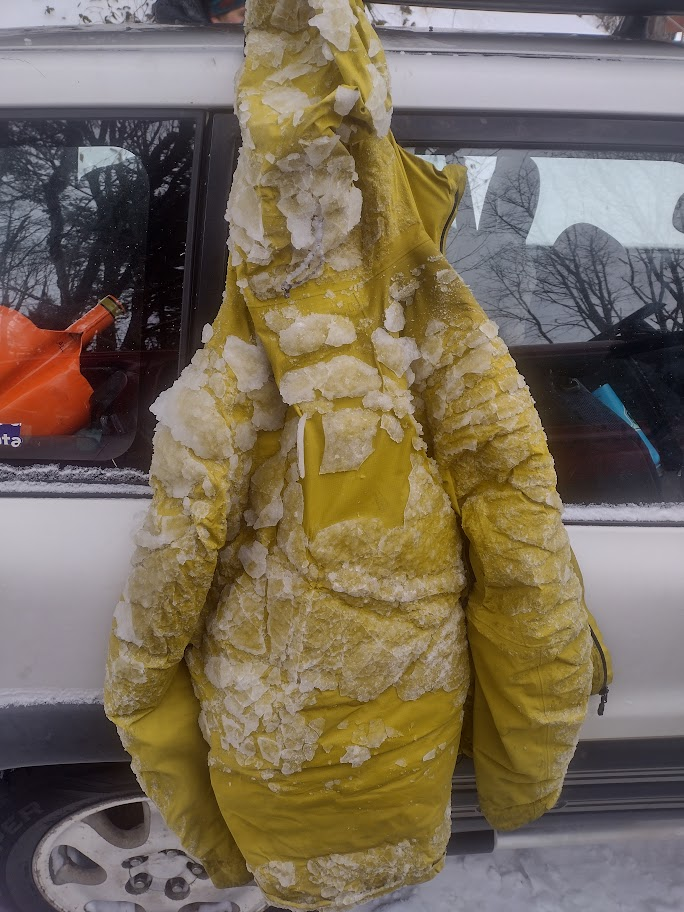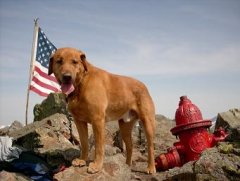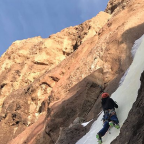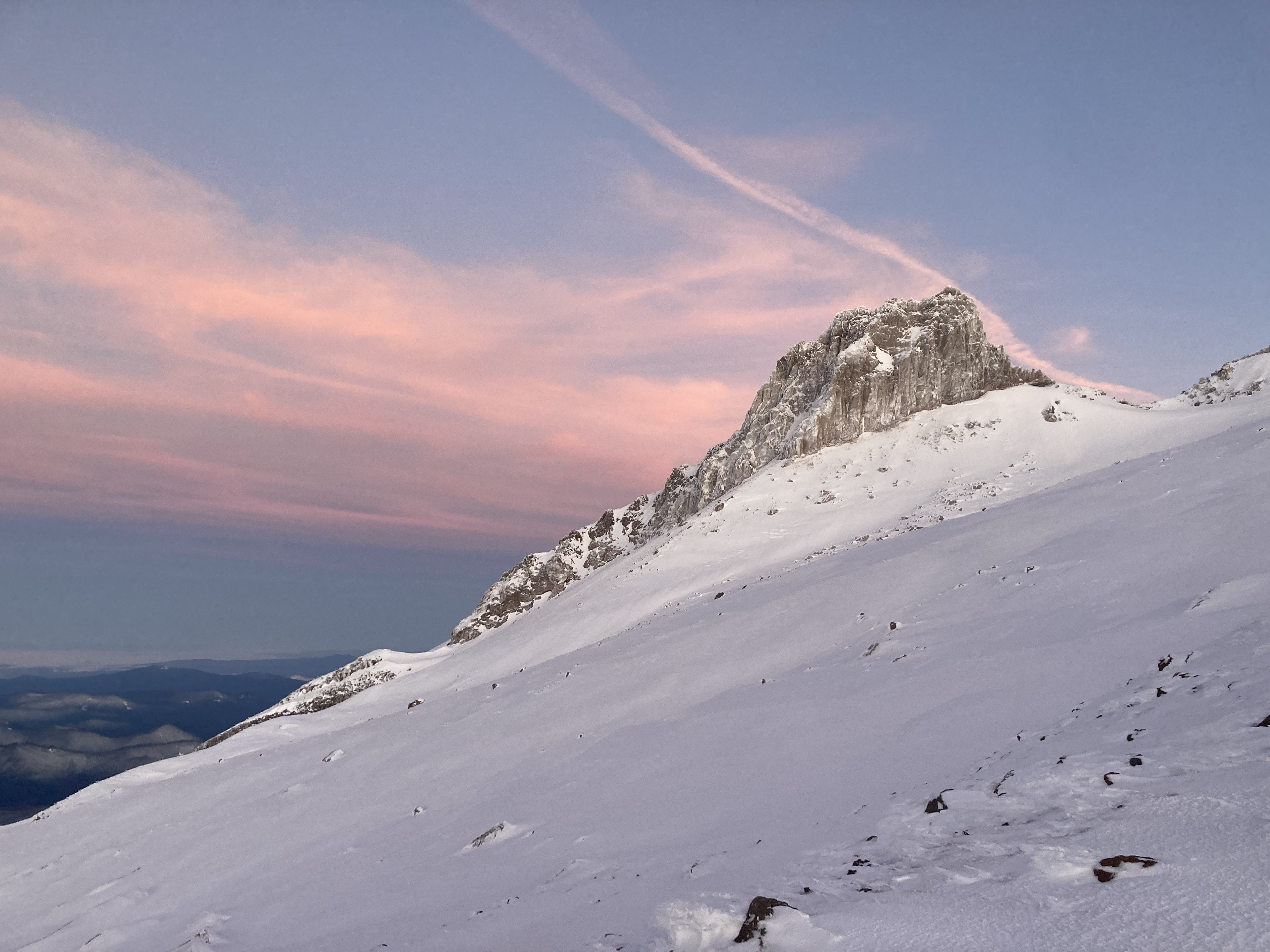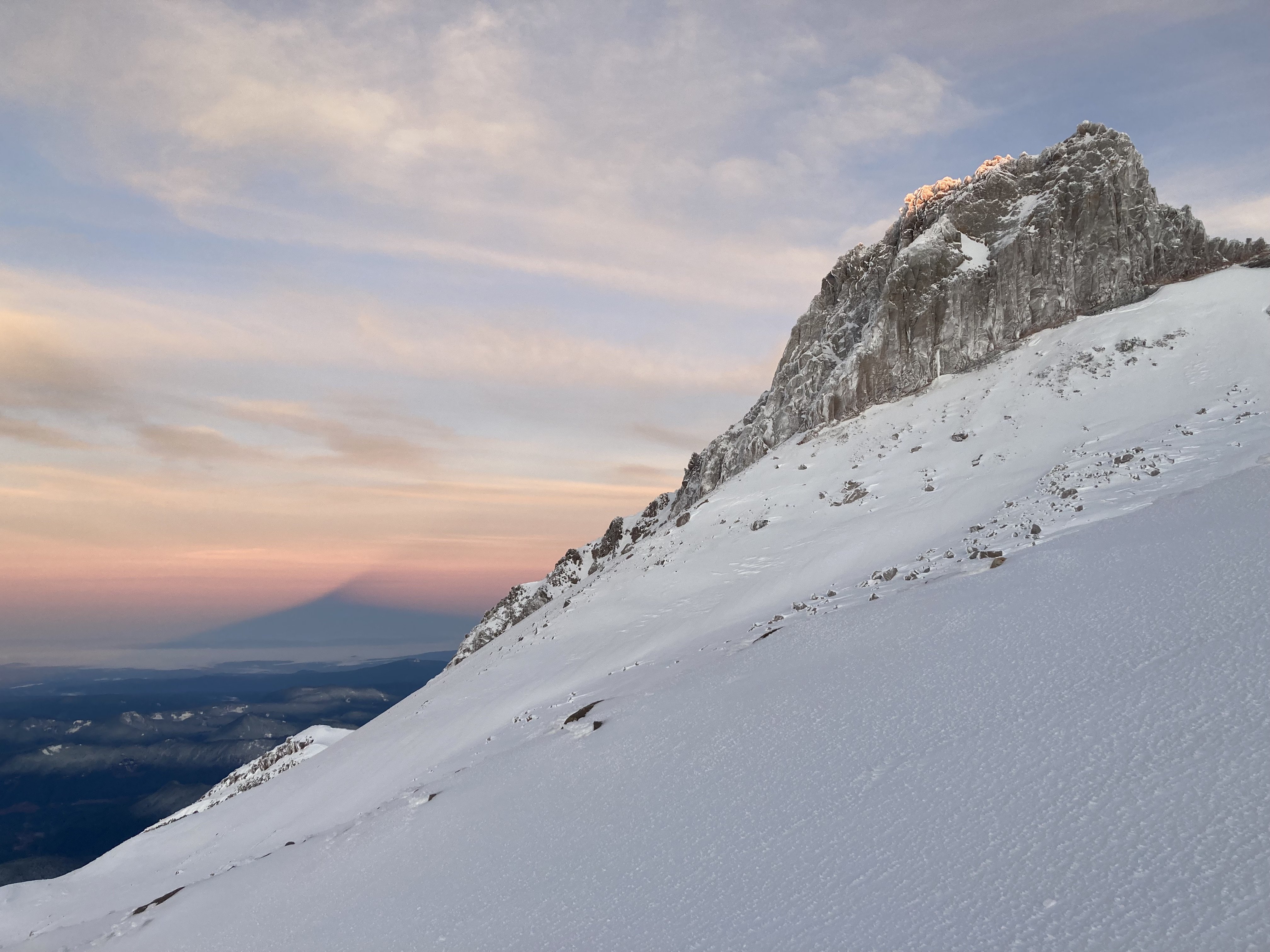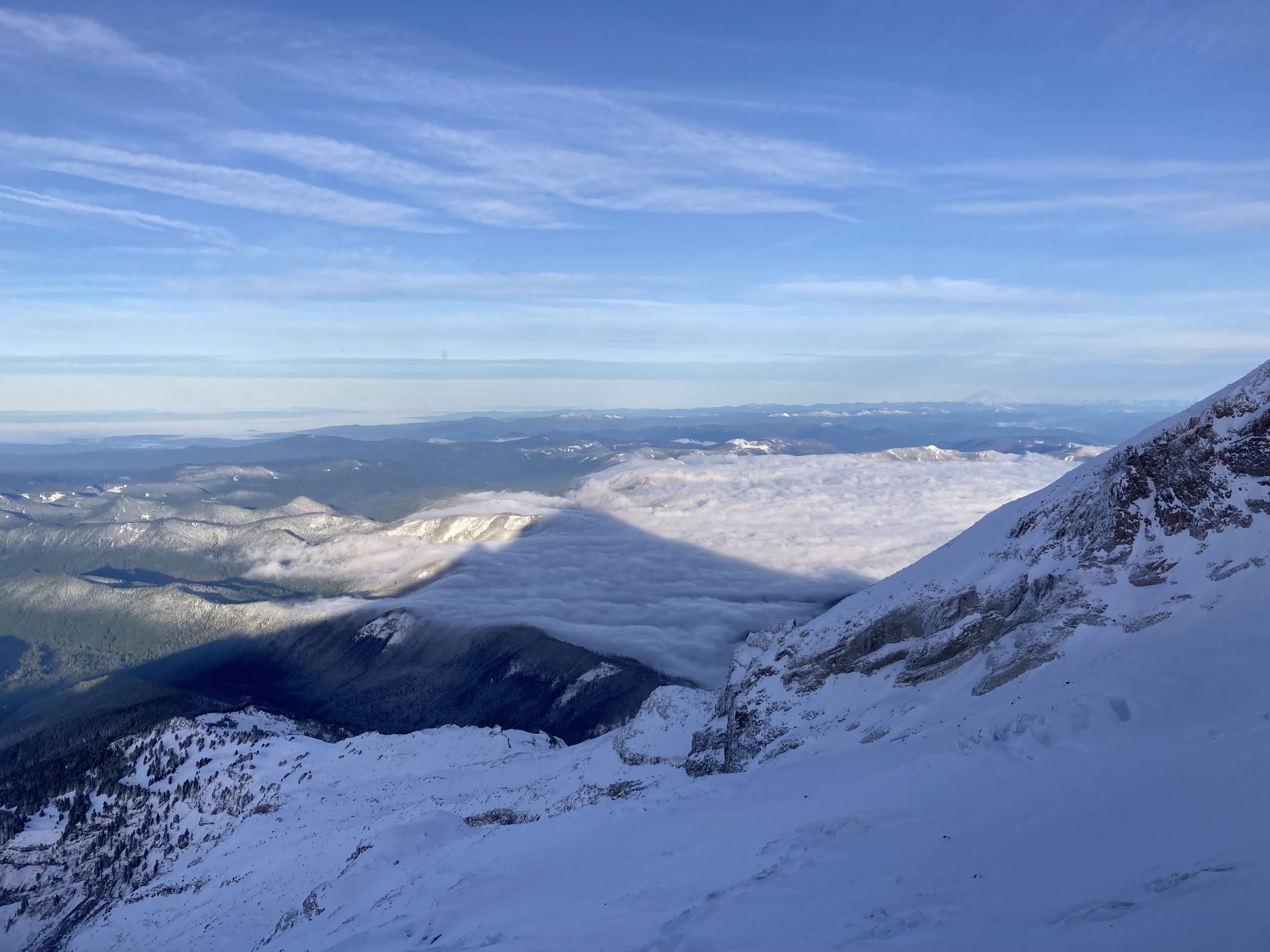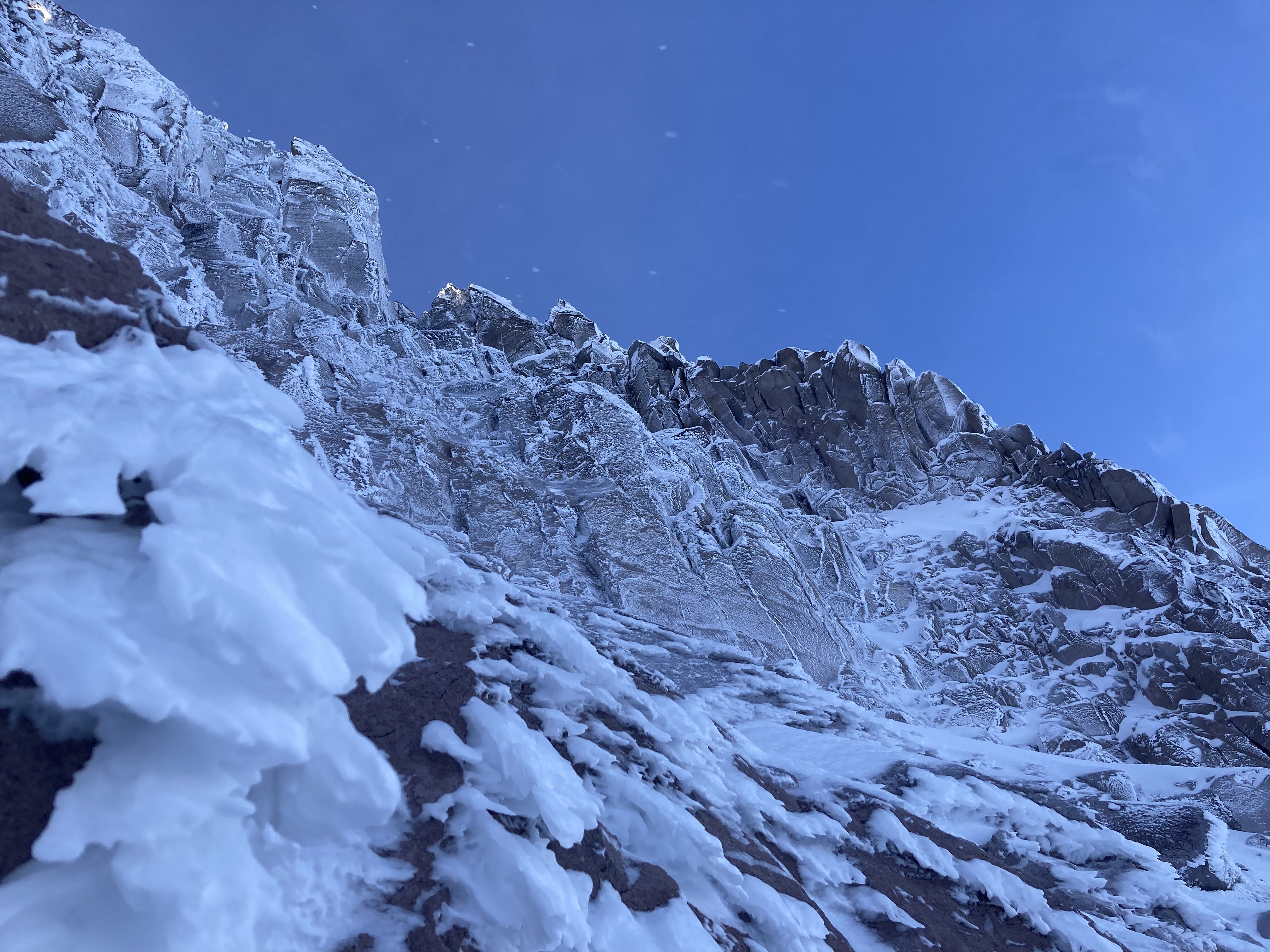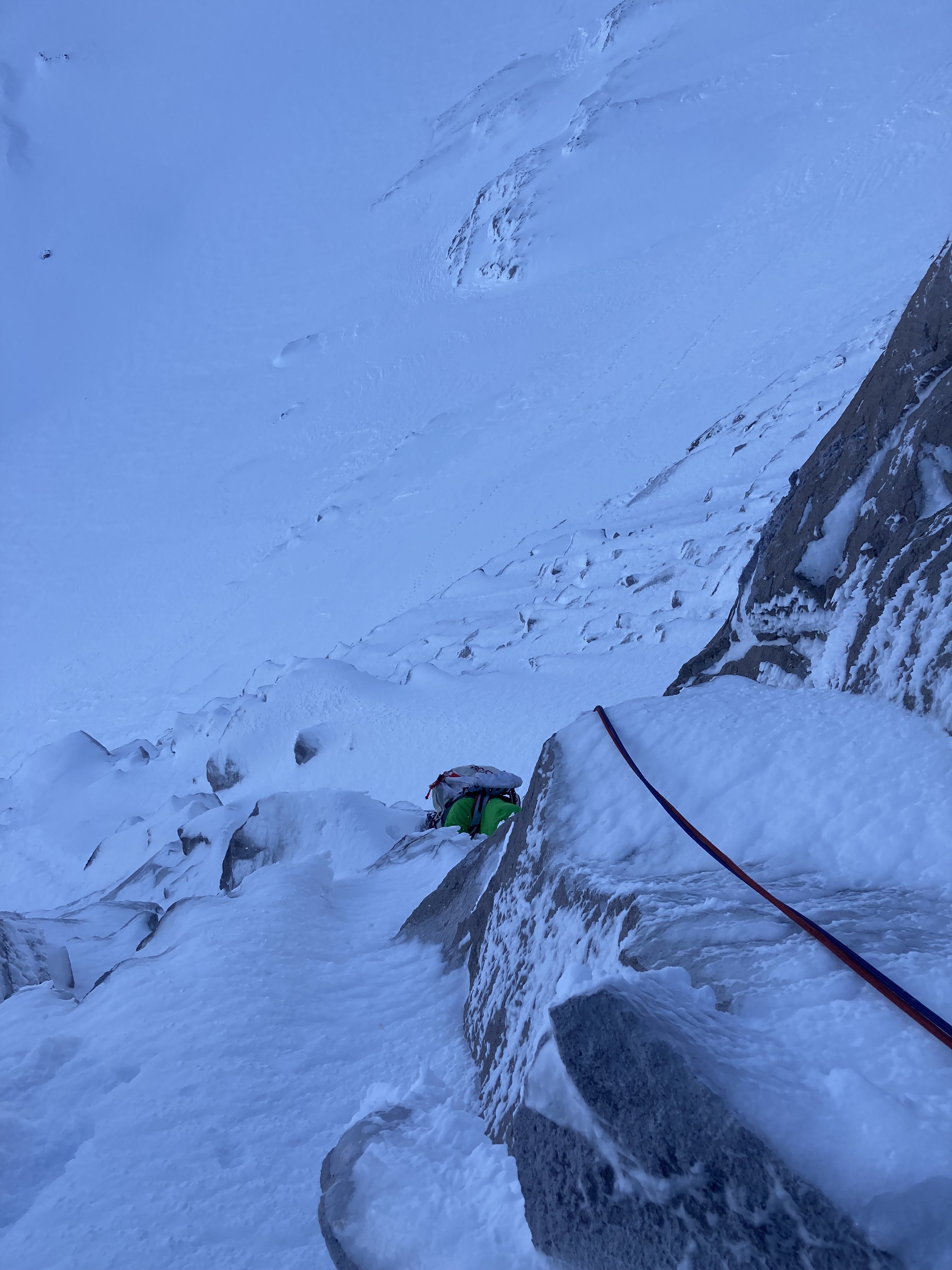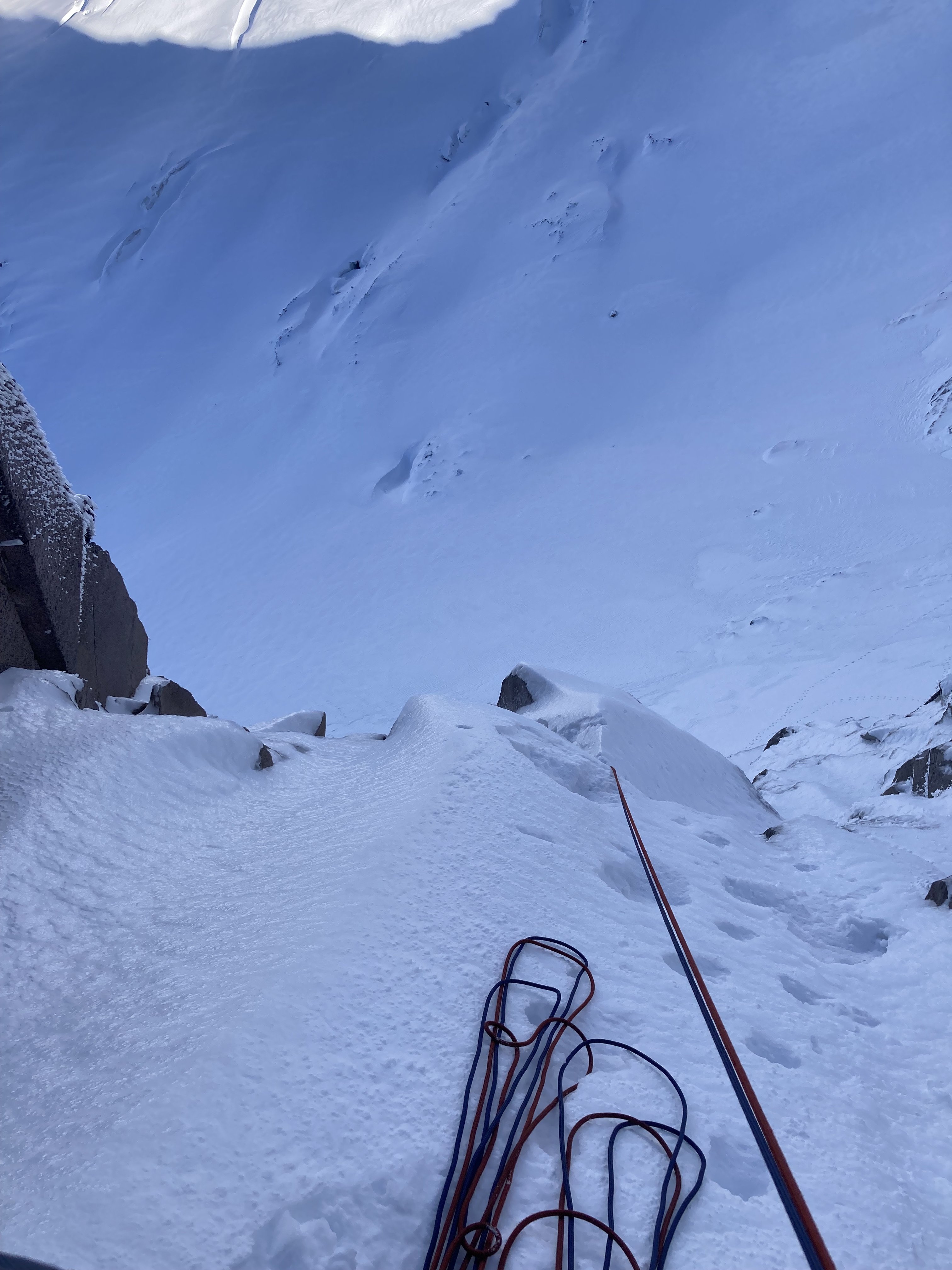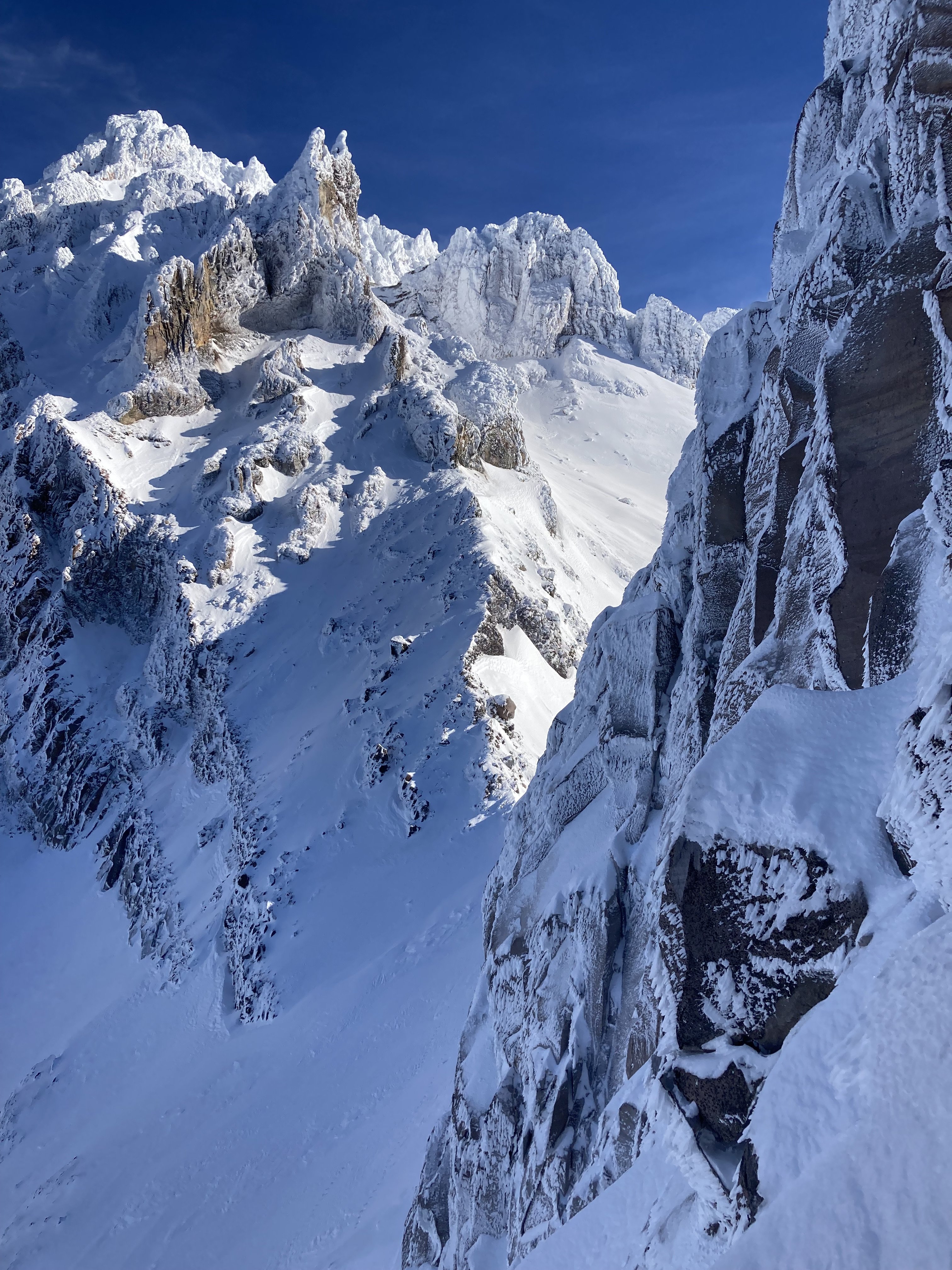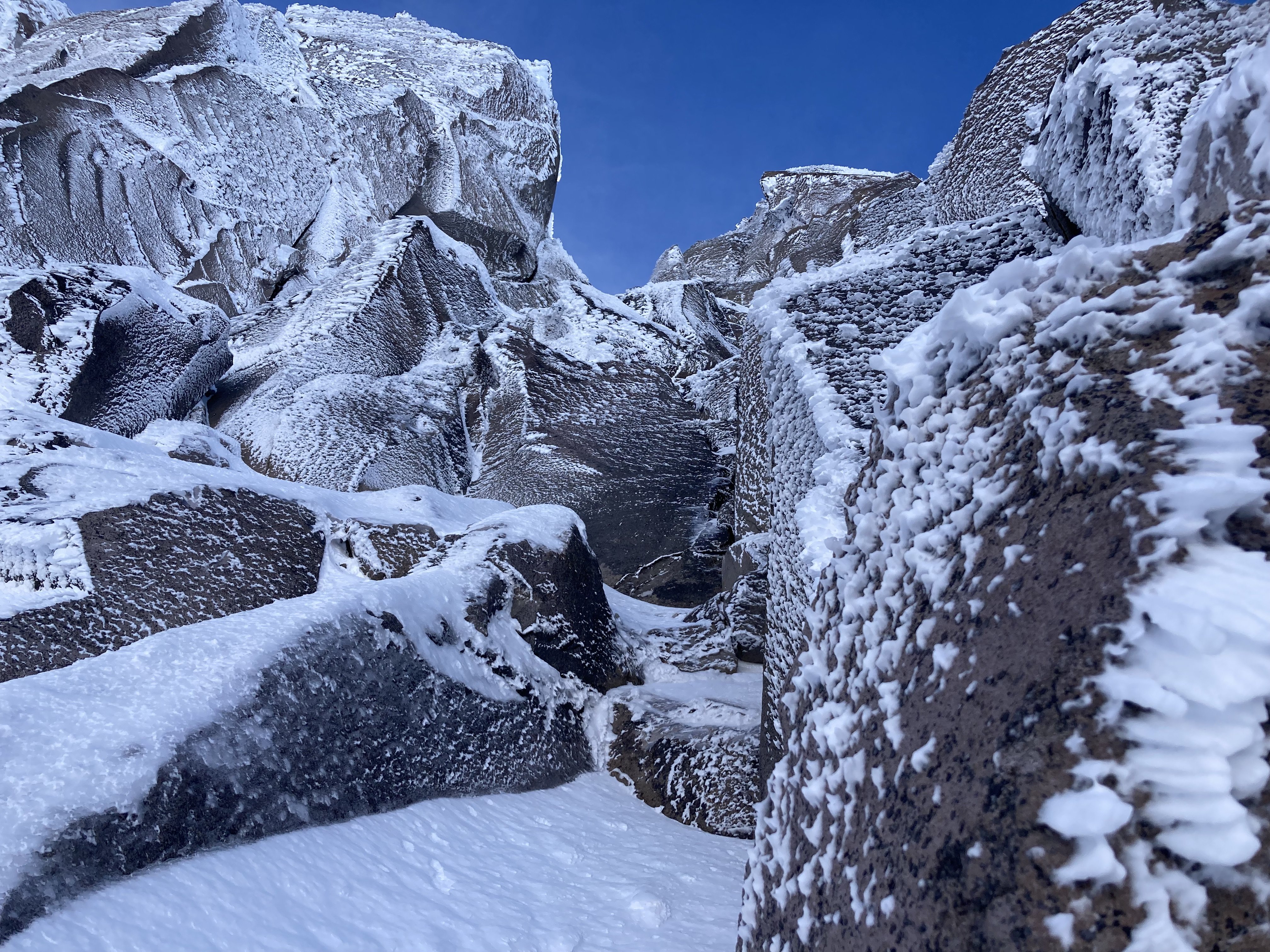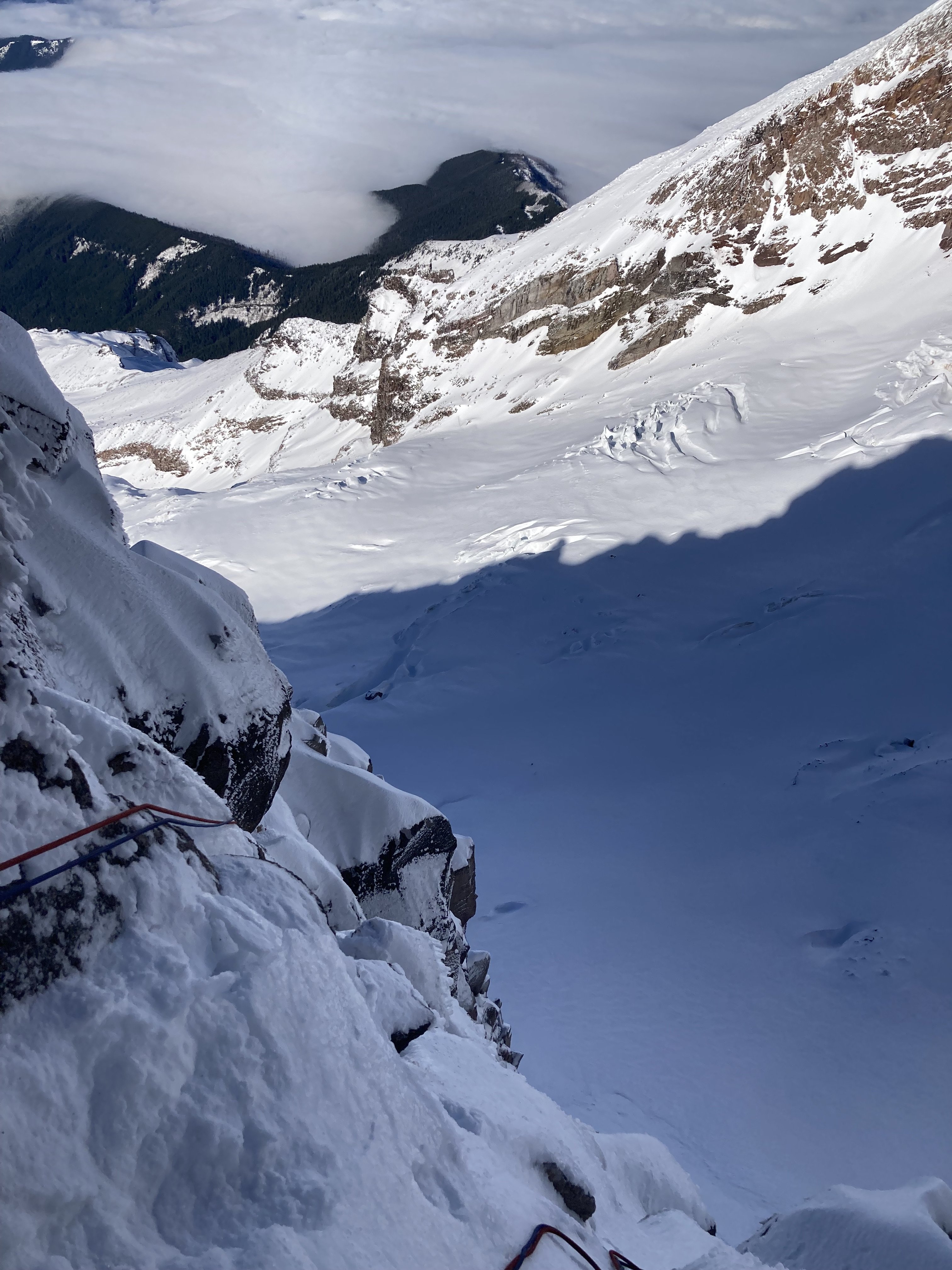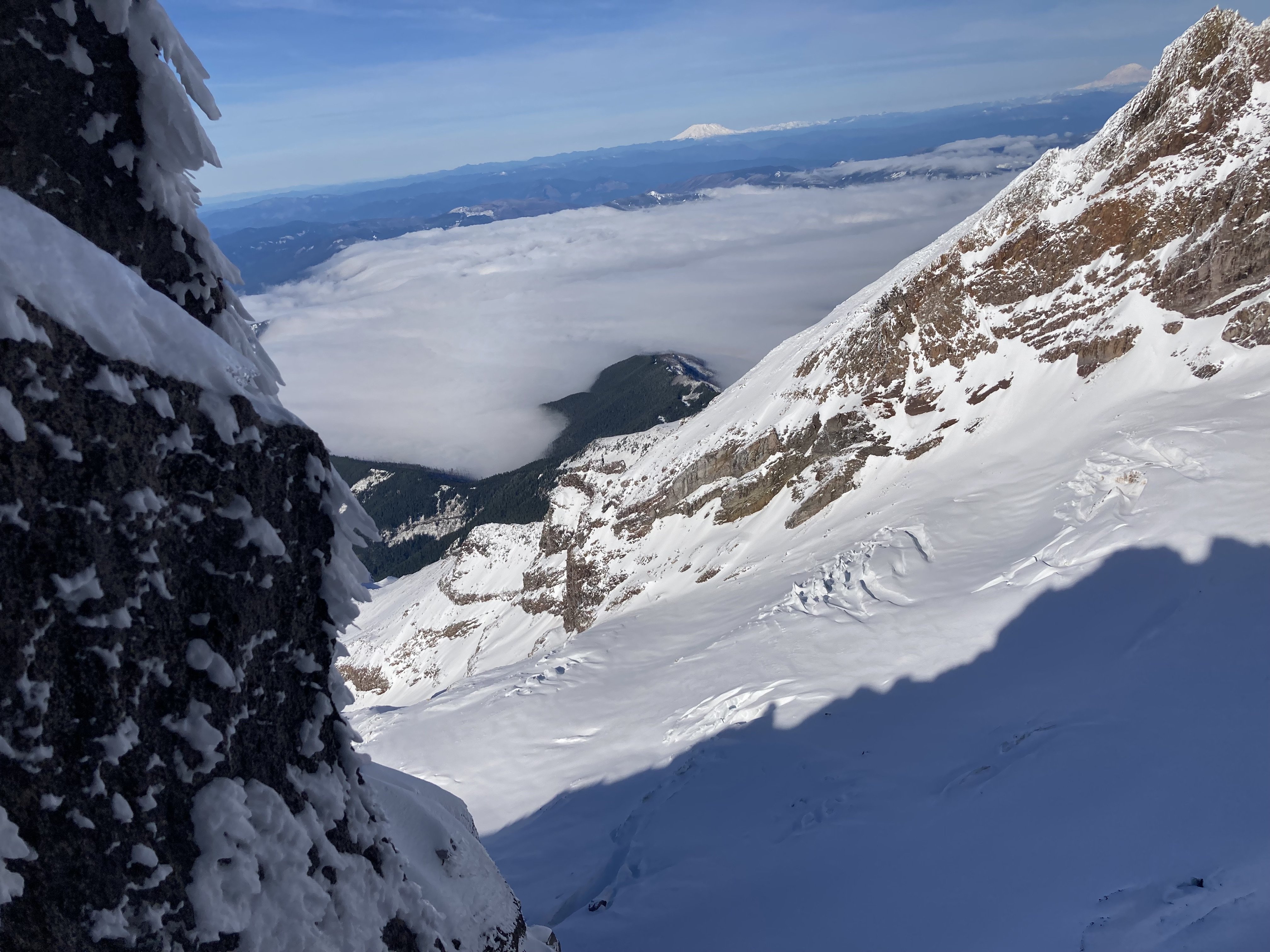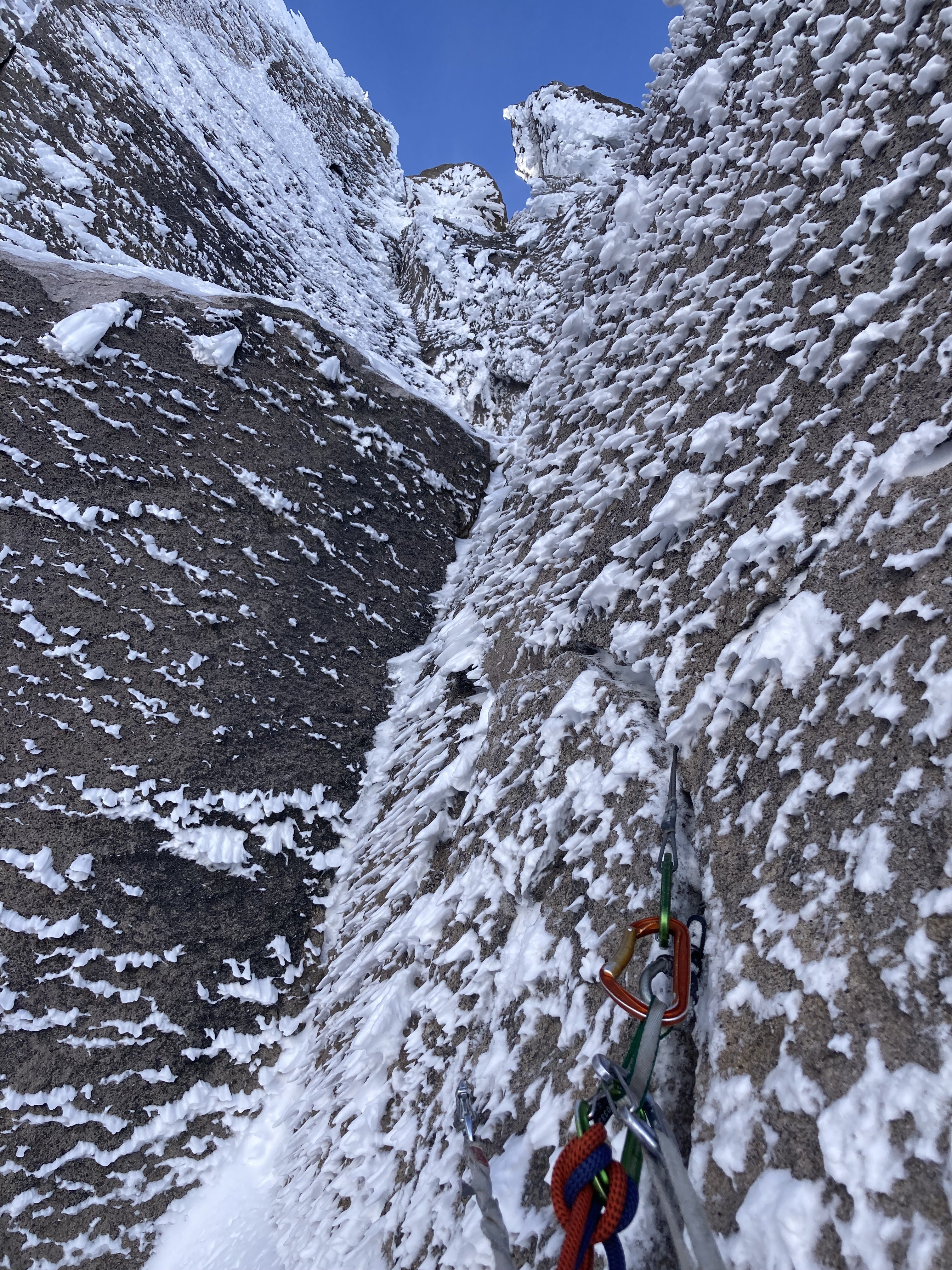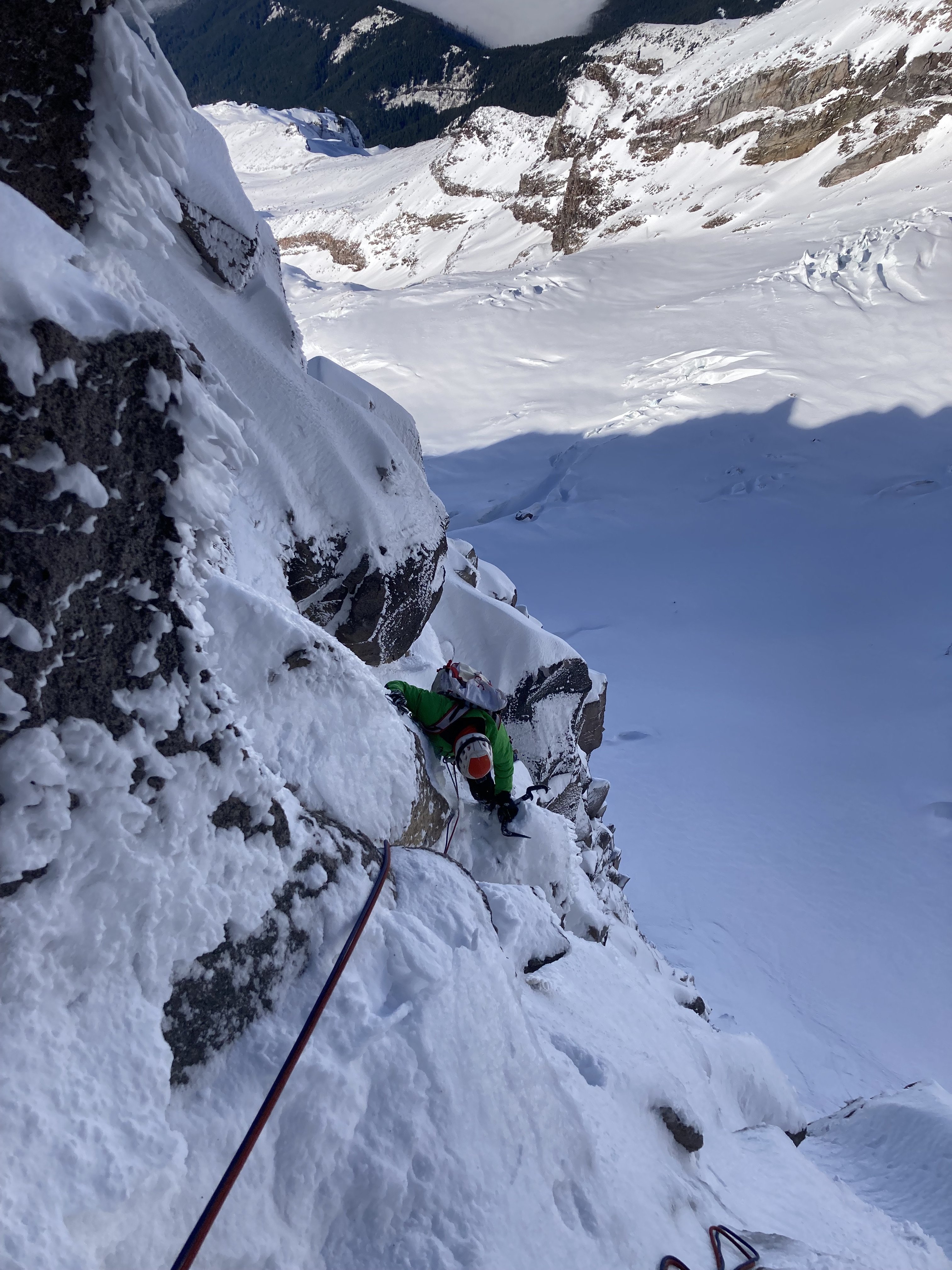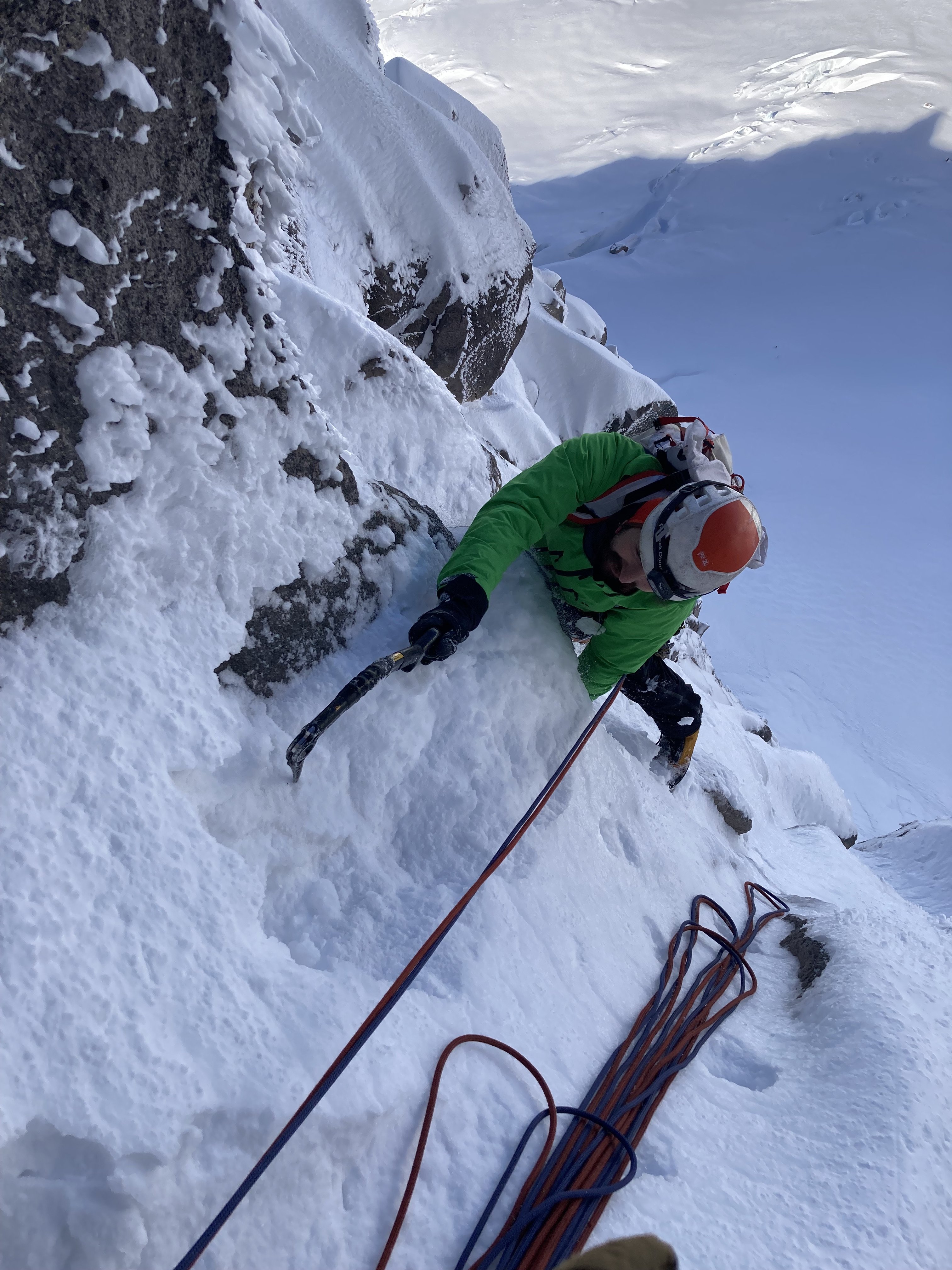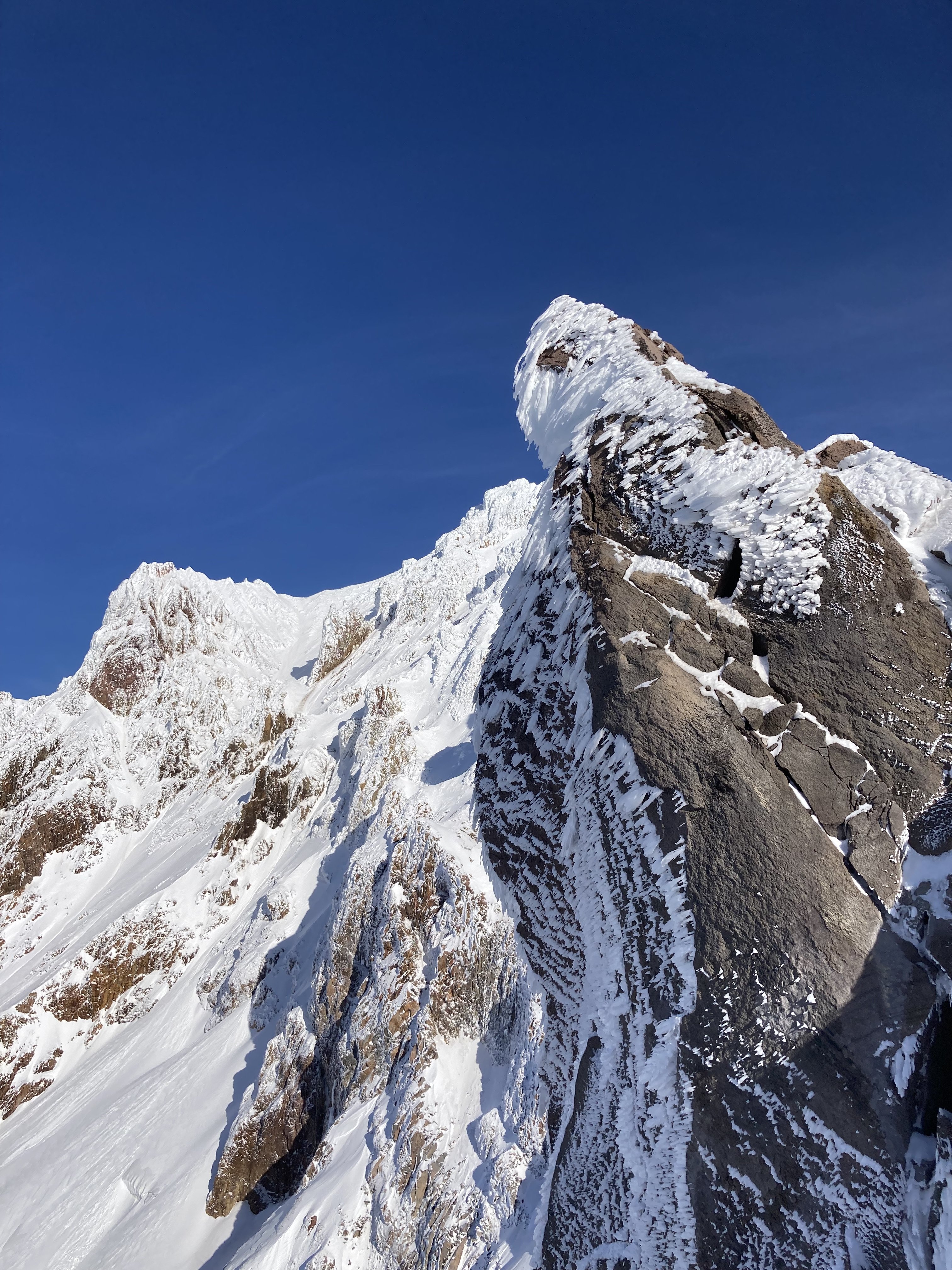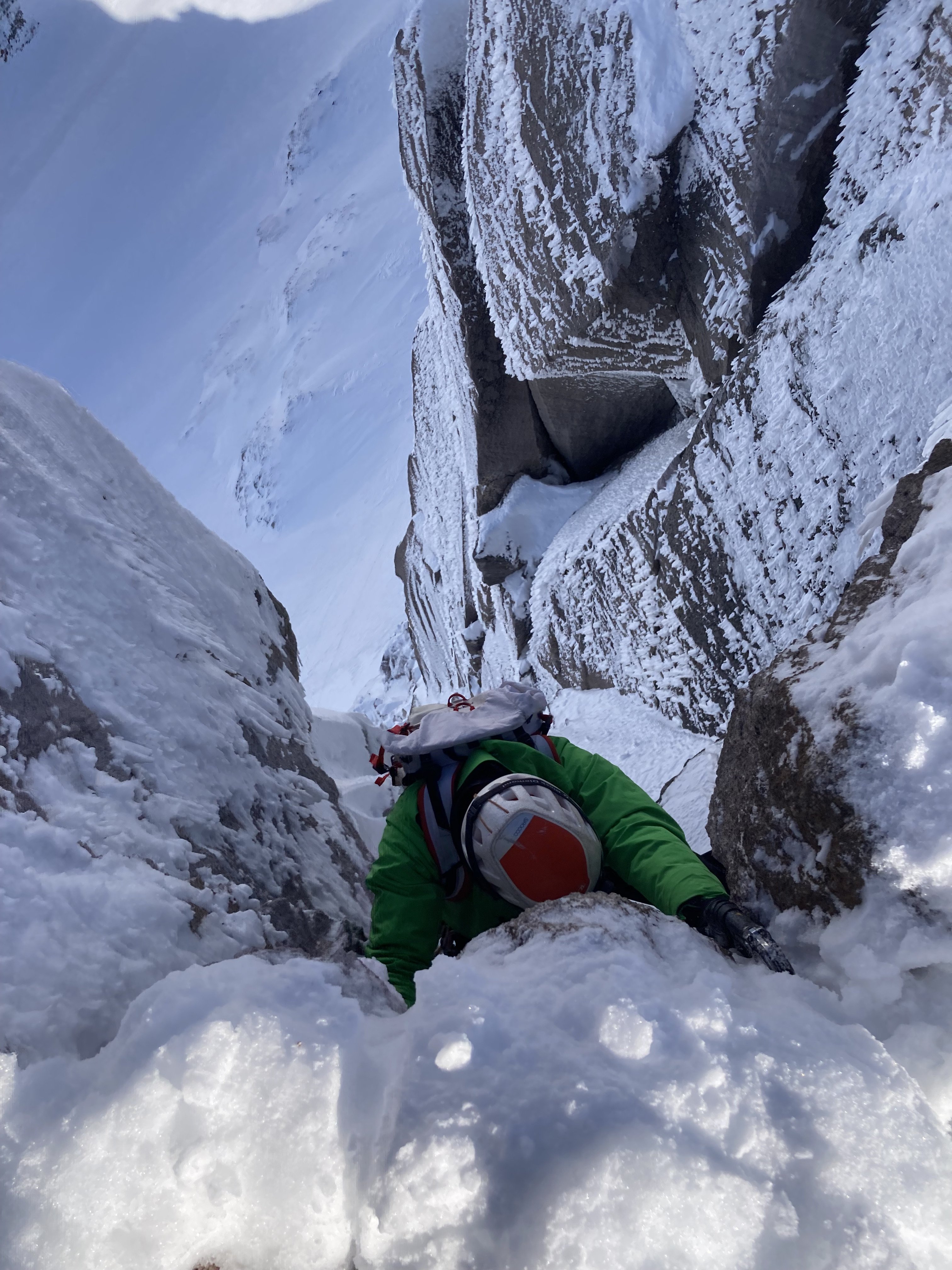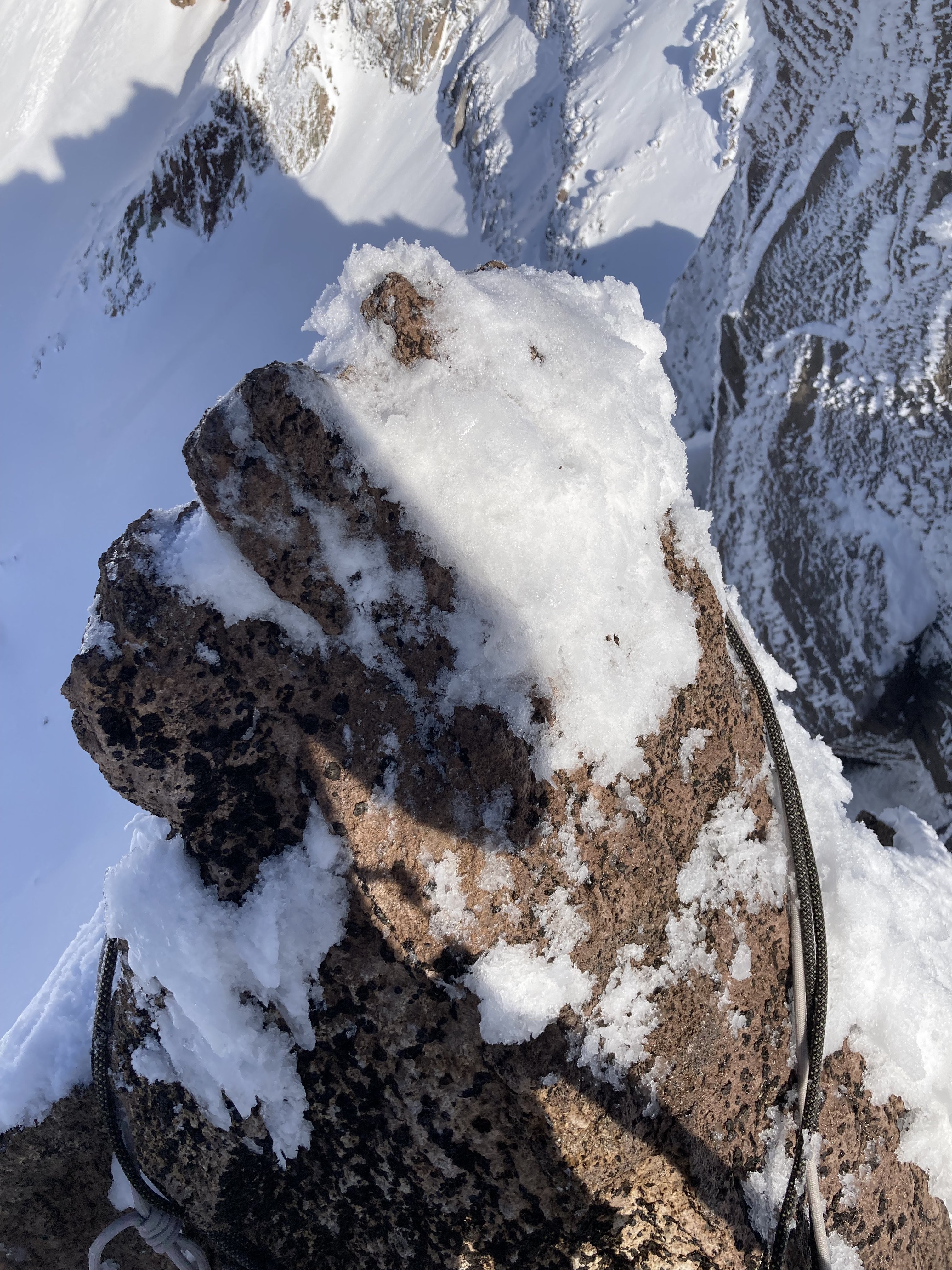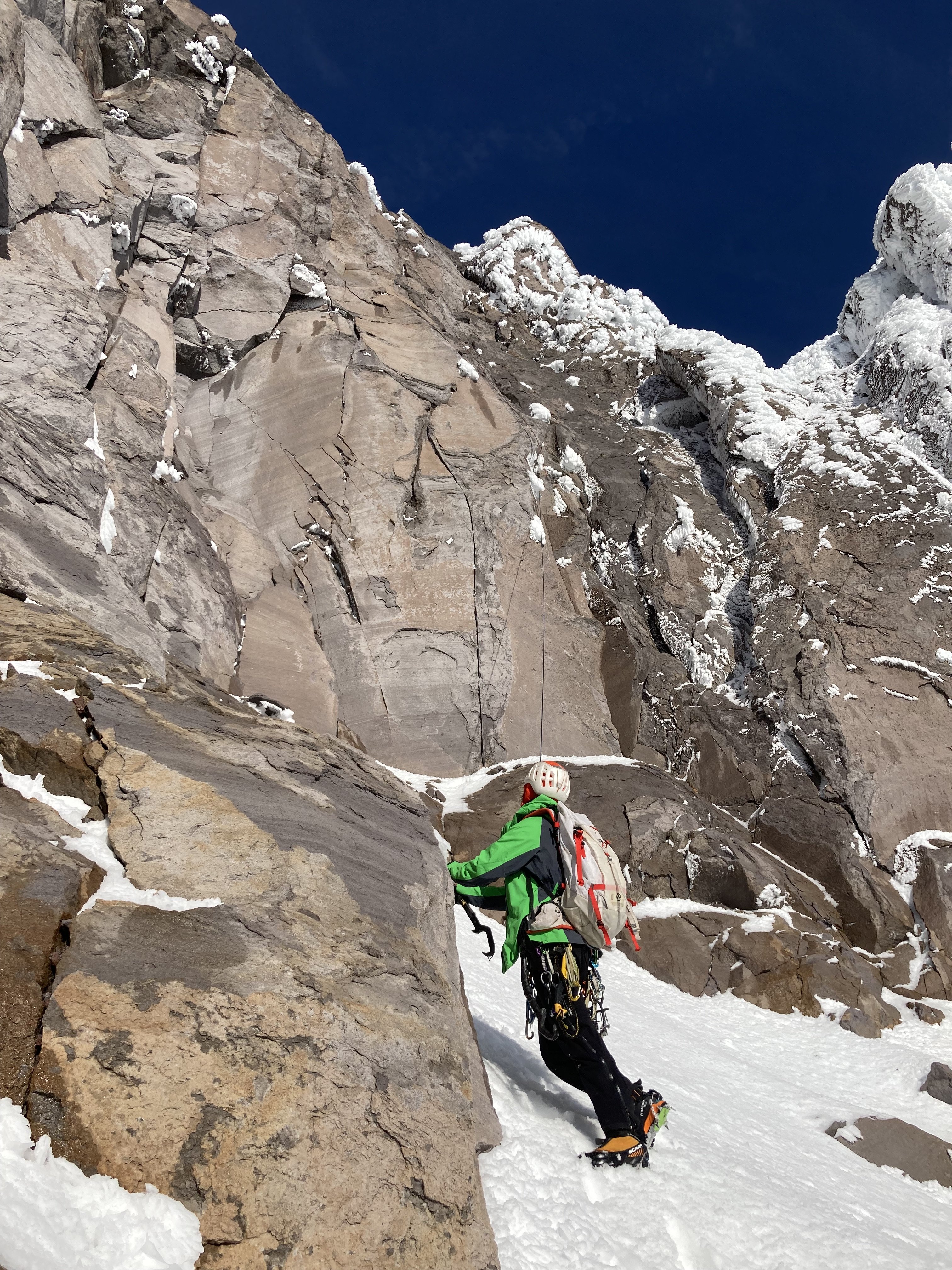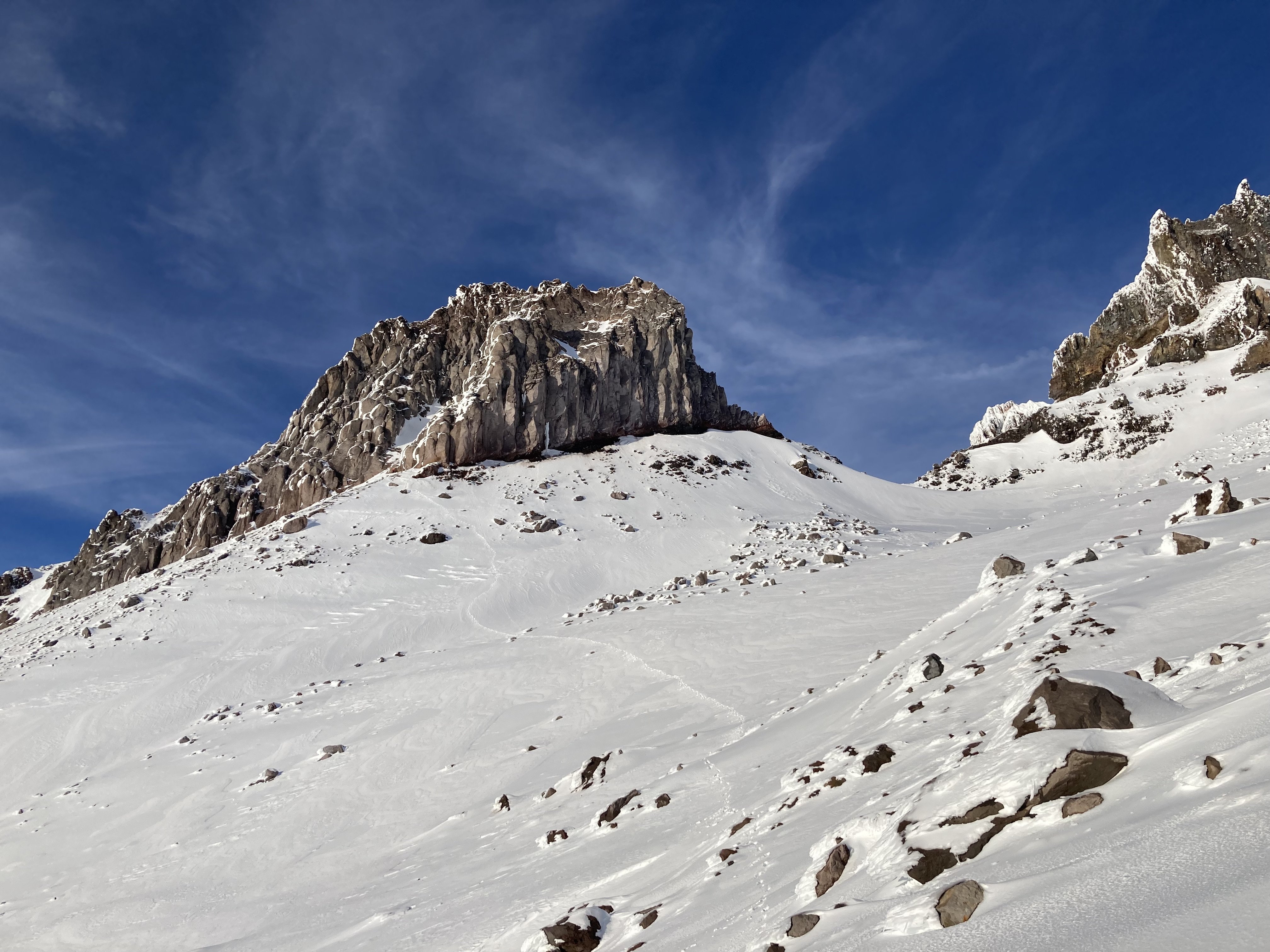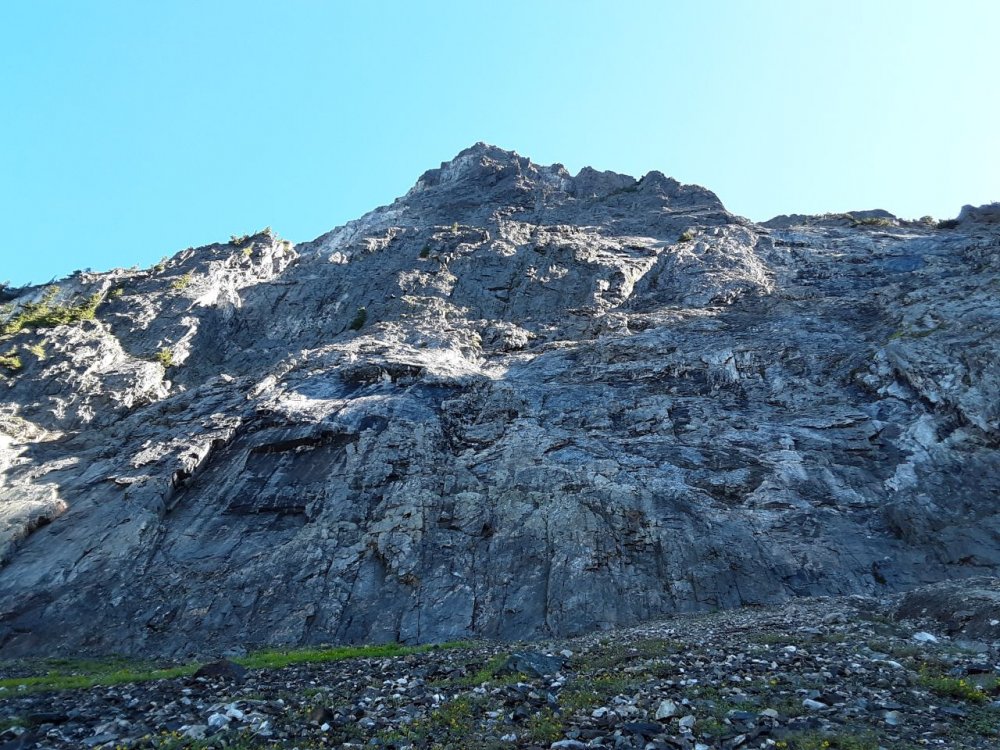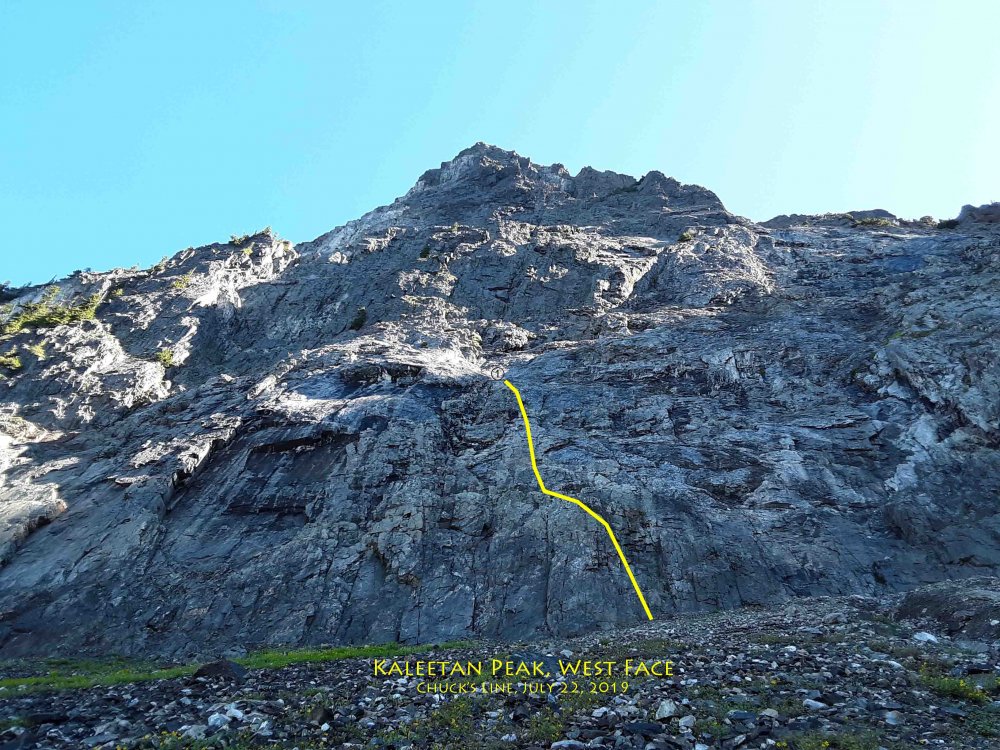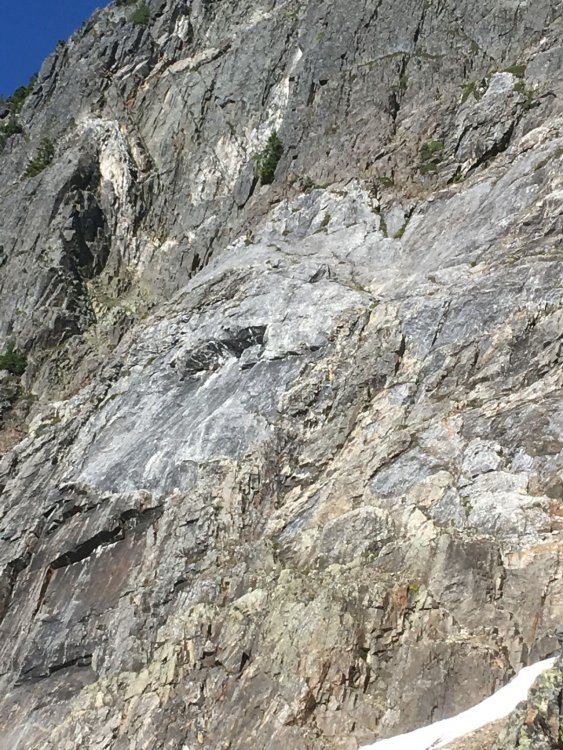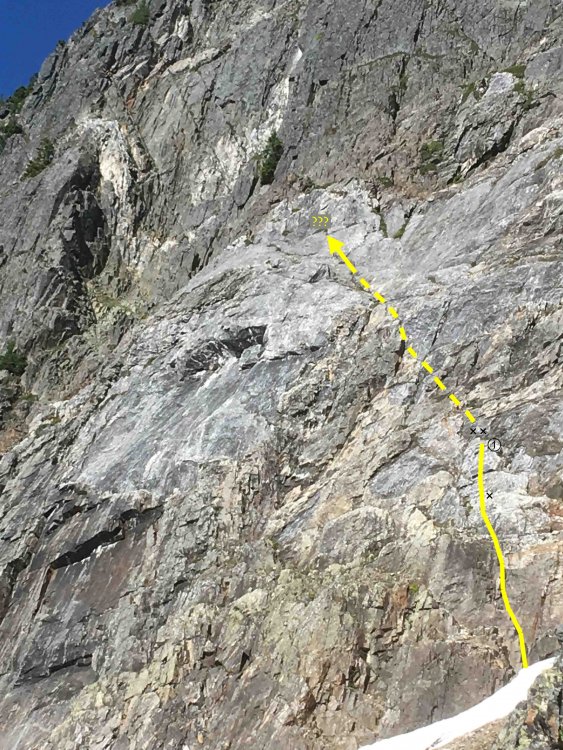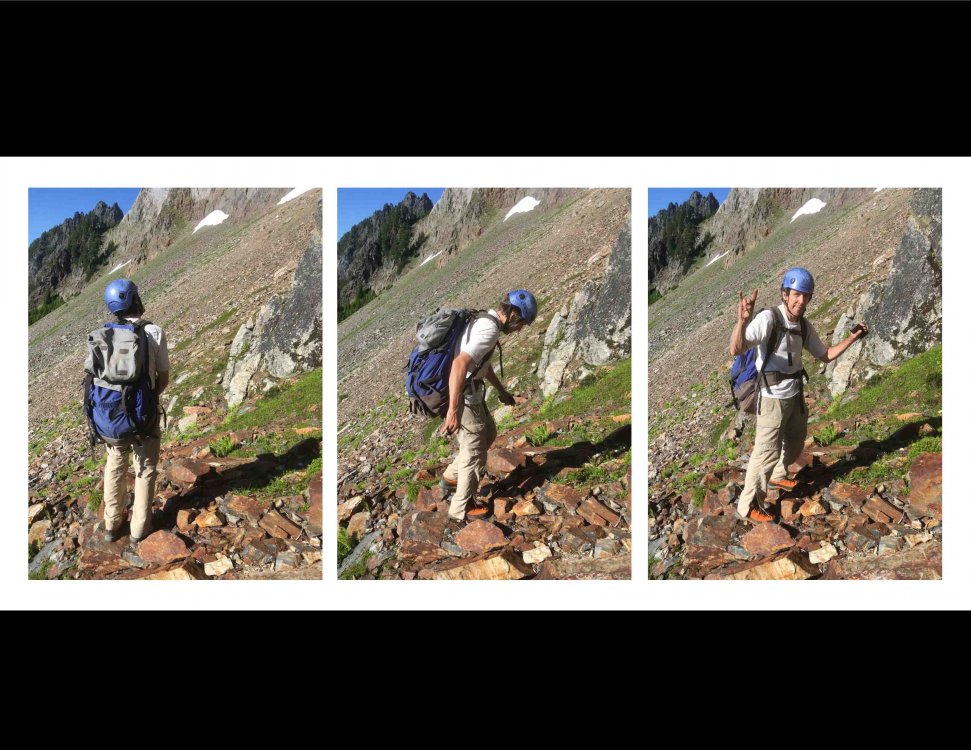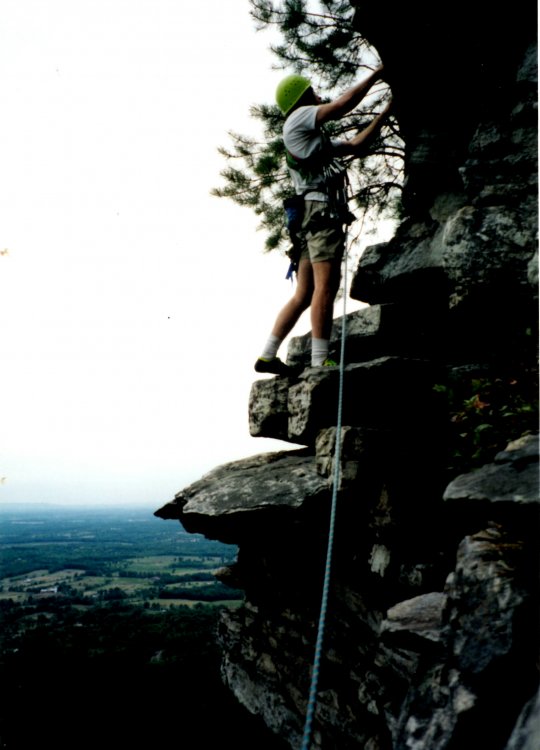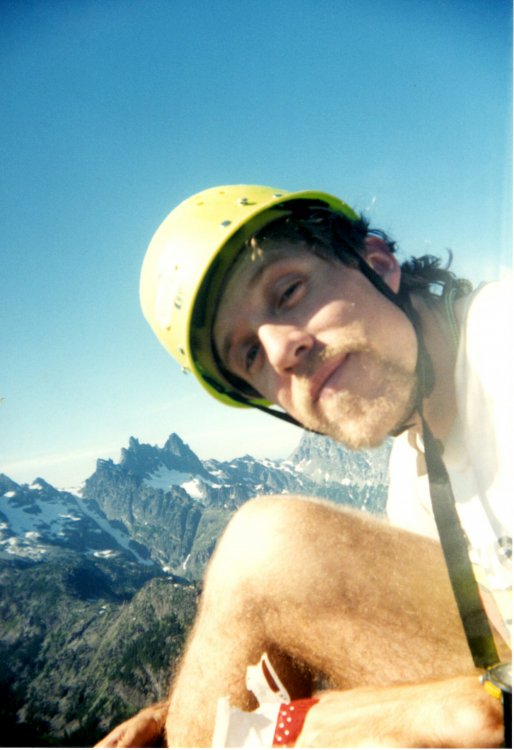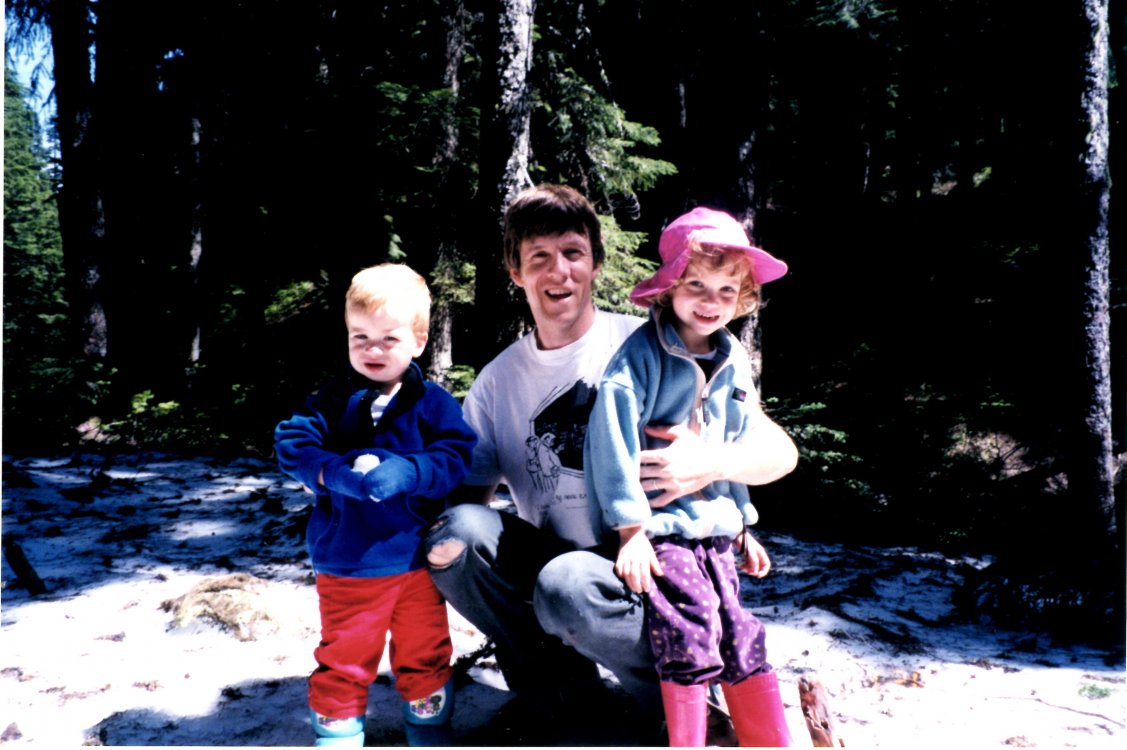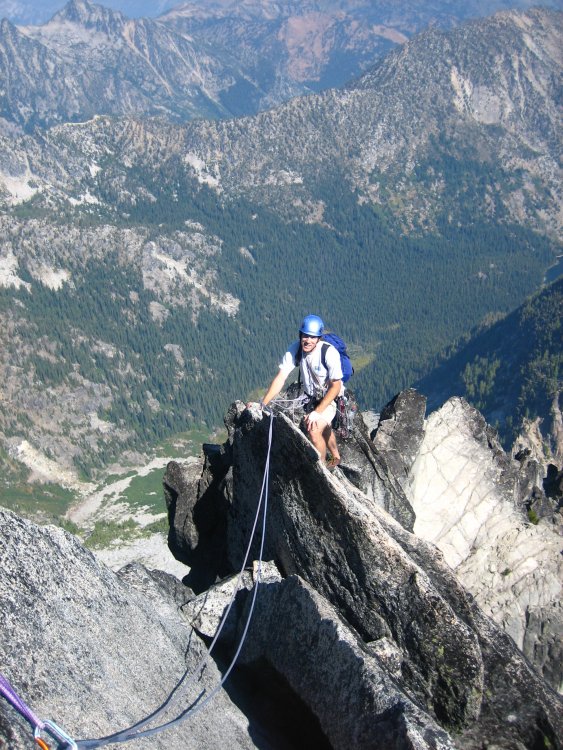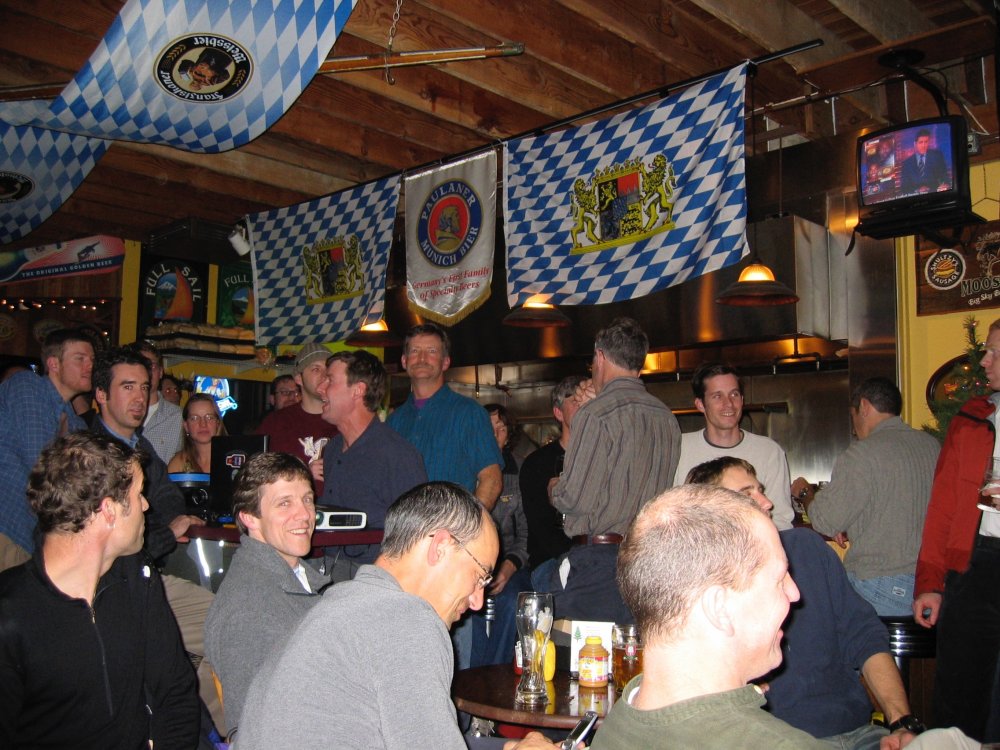Leaderboard
Popular Content
Showing content with the highest reputation on 01/19/24 in all areas
-
Trip: Winter Hard Mox and Spickard - West Ridge, South Face Trip Date: 12/29/2023 Trip Report: Hard Mox (8,504 ft) and Mt Spickard (8,979 ft) Winter Ascents Eric and Nick Dec 27 – Jan 2, 2023-2024 First Winter Ascent of Hard Mox, Second Winter Ascent of Spickard On the summit of Hard Mox Dec 27 – Double carry zodiac boat and gear from Ross Dam trailhead to Frontage road, drag boat to Ross Lake, motor to Little Beaver, hike to Perry Creek shelter Dec 28 – Bushwhack to upper Perry Creek basecamp Dec 29 – Climb Hard Mox via Perry Glacier to West Ridge route (M5 WI2 5-pitch), return to basecamp, 18 hours camp to camp Dec 30 – Bad weather day, rest in camp (rain all day) Dec 31 – Climb Spickard via south face Jan 1 – Bushwhack down Perry Creek, hike to Little Beaver, paddle 9 hours down Ross lake when motor doesn’t start, drag boat up Frontage road, triple carry up trail to truck by 3am Jan 2 – Drive home The route Hard Mox is considered the most difficult of the Washington Hundred Highest/Bulger peaks, and had previously never been climbed in winter. I’m working on climbing all the Bulgers in winter and this peak is the crux of that list. Hard Mox has numerous elements that make it uniquely challening in winter. 1. It is very remote. The nearest road on the US side of the border is 15 miles away line of sight (Hannegan Pass trailhead), and the second closest 18 miles away (Ross Dam Trailhead). Hiking mileage from these trailheads is close to 30 miles, and the trails are likely snowed-over and unbroken in winter. Note: I’m following a rule that ascents must be made legally, so I don’t count roads or trails on the Canadian side of the border. One way to shorten the approach is to take a water taxi run by the Ross Lake resort. These don’t operate in winter, though, so that isn’t an option. Detailed route view 2. The peak is technical. The easiest summer route is 4-pitch 5.6. It was unclear if this was the best winter route, though, since the peak hadn’t been climbed in winter. 3. The weather is unstable in winter. Hard Mox is in the West North zone of the cascades, which generally has more precipitation and less stable weather than other zones. This also means the avalanche conditions are more likely to be unstable in this zone in winter. 4. There are no trails to the peak (on the US side). Bushwhacking is required, and this can be very challenging in the North Cascades, especially in winter. Climbing Hard Mox in July 2018 (photo by Steven) I first climbed Hard Mox in July 2018 with Steven Song, and we entered and exited via Canada. We followed the standard Depot Creek approach, crossed the ridge of Gendarmes to the south face of Hard Mox, descended to the base of the south gully, then climbed up the gully and to the summit via the West Ridge. This is the route that nearly all climbers take to climb Hard Mox. In 2020 I started considering how to climb Hard Mox in winter. I’m following a rule that all winter ascents must be completely legaly (no sneaking in from Canada), so I needed to find an alternative approach. I considered three approach options, and made scouting trips to determine the feasibility of each in winter. Over the next three years I would make a half-dozen scouting trips and two unsuccessful winter attempts on Hard mox. Scouting the Ross Dam approach and paddling Ross Lake in November 2020 First, I considered the Ross Dam trailhead approach. This route is to start at the Ross Dam trailhead, hike up the lake to Big Beaver, then hike to Redoubt Creek and bushwhack up to meet the summer route. This route is 30 miles one way. It has the advantage that the first half is mostly low elevation and often snow-free in winter, though it requires crossing Beaver Pass, which would likely be snow covered. In mid November, 2020 I did a trip where I hiked this approach to Redoubt Creek, then continued to Little Beaver and packrafted back to Ross Dam in a big loop. That approach would probably take two days in good conditions in winter. Scouting the Hannegan Pass approach in December 2020 I next considered the Hannegan Pass approach. This would require hiking or skiing in from the Hannegan Pass trailhead to the Chilliwack River, bushwhacking up Bear Creek, then meeting up with the standard summer route at the Redoubt-Easy Mox col. It would be about 28 miles one way. In December 2020 I drove up the road towards the Hannegan Pass trailhead and found a sign that the road is groomed for skiing in winter and closed to snowmobiles. This meant there would be an additional 5-mile approach in winter, making the approach 33 miles. I skied up the trail to near Hannegan Pass, but progress was slow. That approach would probably take at least two days. Those approaches would be too long for me to squeeze Hard Mox in a regular weekend or even a 3-day weekend. Ideally I could find a one-day approach so Hard Mox could be possible in one of my two long holiday weekends of the winter (presidents day weekend and MLK day weekend). I’m a teacher so can’t take vacation days, meaning these holiday weekends are my options in winter. I next considered a boat approach on Ross Lake. I have a packraft, but I discovered it can take most of a day to paddle between Little Beaver and Ross Dam. I really needed that to take on the order of a few hours so the rest of the day can be used for hiking and bushwhacking in. For that to be feasible the boat really needed to be motorized. Ross Lake is in the unique situation that motorized boats are allowed on the lake, but there is no road access for the general public. It is possible for workers at the dam or at the Ross Lake resort to drive to the lake by taking a vehicle ferry from the town of Diablo to upper Diablo lake, then driving up Frontage road connecting the two lakes. This service is not available to the public, meaning Frontage road is not reachable by vehicle from other roads. There exists a road on the north end of Ross Lake – the Silver Skagit Road – and this theoretically allows the public to drive to the lake and launch private motor boats. However, that road was washed out in November 2021 and it is unclear when it will ever reopen. It is possible that the road might be passable to a snowmobile in the winter, and an intriguing option might be to drag a boat behind a snowmobile to access the north end of the lake. I haven’t been able to test this, though, and I’m not sure if it would technically be legal to come in from canada that way if the road is closed and there is no official checkpoint open at the border along the road. There are currently two options to get a personal motor boat to Ross Lake. The first is to carry it down the 0.6-mile trail from the Ross Dam trailhead to Frontage Road, and then take it 0.5 miles down the road to the lake. The other is to put the boat in at the boat launch at Diablo Lake, ride to Frontage Road, then somehow carry or drag the boat up Frontage Road (1.5 miles, 600ft gain). From talking to friends with experience boating I settled on two main options. The first was to use a canoe with an electric outboard motor. This could theoretically be carried down the trail in multiple loads. It could also theoretically be dragged up Frontage road on a dolly, though only if Frontage road were snow-free. However, the canoe has several disadvantages. First, it is not very stable. I have friends who’ve tipped over in canoes on Diablo lake. That would be dangerous in winter, and winter is when the weather is generally worse on Ross Lake. Also, the biggest motors I could find for canoes were electric trolling motors that would struggle to get 15 miles up to Little Beaver, even at a very slow speed. Plus, an electric motor is not as reliable in cold conditions as a gas motor. The zodiac boat’s maiden voyage on Stave Lake during a climb of Mt Judge Howay in BC The other option was a zodiac-style inflatable boat with gas or propane outboard motor. This vessel is much more stable than a canoe and very difficult to tip over. It is made of durable thick material with multiple chambers. It has a much higher capacity than a canoe, and can go much faster and farther with the gas or propane engine. It deflates, so is portable. They even come with retractable wheels that can be deployed to drag the boat along frontage road. This appeared to be the optimal solution. My friend Matt had such a boat and we went on a test trip together in September 2022 in British Columbia to climb Mt Judge Howay (which requires a boat approach up Stave Lake). The boat had a 4-stroke propane motor, which is very clean and reliable and meets the strict environmental requirements for personal motor boats on Ross lake. That trip went well, and I ended up buying the boat from Matt. The boat as a 5 horsepower motor that is about 60 pounds, the boat itself is 70 pounds, and a full 5-gallon propane tank is about 50 pounds. A duffle bag of accessories (wheels, oars, life jackets) weighs about 40 pounds. Each one of these items is manageable to carry, which makes this a good solution. The motor allows the boat to go a max speed of 5.7mph fully loaded, but this is actually a perfect speed for Ross Lake. Taking the boat for a test run on Lake Chelan with my dog Lily, October 2022 Through multiple tests I’ve found that a fully loaded boat and full tank of propane has a range of 40-50 miles. Little Beaver is a 30-mile round-trip journey, so the propane tank is just the right size with a little bit of safety factor. One problem with Ross Lake is that in the winter the lake level drops and submerged tree stumps stick out in seemingly random and unexpected locations. In winter it is likely that boating on Ross Lake to approach Hard Mox will need to be at night, and it is thus dangerous to go too fast in the dark for risk of hitting the stumps. That’s particularly risky in an inflatable vessel. A speed of 5.7mph is slow enough that stumps can most likely be avoided. To make a trip safer, though, I called the Ross Lake resort and had them mail me a map with general stump locations marked. I also found a fishing depth map of the lake and charted a GPS course to follow the deepest section and avoid known stump areas. I would load this track on my GPS watch before boating up Ross Lake in the dark. First test run of the boat in Ross Lake boating to Little Beaver, October 2022 In October 2022 I did the first test run of the boat in Ross Lake. The goal would be a thorough simulation of the entire Winter Hard Mox approach and climb. My friend Ryan Stoddard recommended the Perry Creek approach to Hard Mox based on his approach to the Chilliwacks the previous year. He said the bushwhacking was difficult, but it would give direct access to the south face – west ridge route without requiring a traverse from the ridge of gendarms that might be sketchy in winter. I first wanted to test the Diablo lake + Frontage Road method. Talon joined, and we decided to climb Hard Mox in a weekend. Saturday morning we put in at Diablo Lake, motored through zero-visibility forest fire smoke in the dark, then reached Frontage road. The takeout was tricky to get the boat up the dock, and dragging the boat and gear up Frontage road was very difficult and time consuming, even with the nice deployable wheels. On the summit of Hard Mox in October 2022 with Talon We made good time up Ross Lake moving at 5.7mph, and got to Little Beaver after 2.5 hours on Ross Lake. We then hiked to Perry Creek shelter. To get up Perry Creek I’d seen on an old quad that there used to be a trail up the north and east side of the creek in the 1940s, but it was long-abandoned. Other groups, including Ryans, had followed that side of the creek and it sounded tough. We decided on a different approach. We went straight up the creek, scrambling on boulders on the side. It was actually fun and basically no bushwhacking. Then we hit old growth forest and followed that on the south side of the creek all the way to the edge of treeline. This showed the Perry Creek bushwhack was actually not bad at all! That was valuable information for winter. In the basin below Hard Mox in October 2022 We camped at the basin below Hard Mox, then the next morning climbed up the Perry Glacier. We were unsure if there would be easy passage from the glacier up to meet the standard summer route, but were surprised to find an easy 3rd-class gully connecting to the route. From there we climbed the standard west ridge route, and it was useful to refresh my memory of which of the lower gullies is the correct one (many teams lose time route-finding in that area). We ended up topping out by 9am, then descended all the way back to the boat, rode out, and I got home Monday morning 4:45 am, barely in time to make it to catch a nap before my morning lecture. This scouting trip successfully showed that basecamp could be reached in a single day with the zodiac boat, as hoped for. I also was able to test my new custom offroading headlights with motorcycle battery that I’d velcroed to the front of the boat. This allowed for boating in the dark, which would likely be necessary in winter. Ross Lake was foggy, though, so visibility wasn’t perfect. However, the approach had the one disadvantage that if Frontage road were covered in snow, then dragging the boat up would likely be very difficult. So that approach might not be ideal. Carrying the boat and motor down the trail in late October 2022 Talon had a friend that worked at Ross Dam, but unfortunately they didn’t have anywhere I could store the boat securely for winter access. We contacted the Ross Lake resort, but they didn’t want to store the boat. So, I would have to get it to the lake on my own and store it at home. I next wanted to test the second option to get the boat to Ross Lake, via carrying it down from Ross Dam trailhead. In late October Nick and Talon joined for another mission. My main goal was to test that boat approach, but a secondary bonus goal was to go survey East Fury. I suspected it might be high enough to be a Washington Top 100 peak. To get the boat down the trail I researched different methods hunters use to transport animals on trails. One way is a single-wheeled device with handlebars and a brake, with racks on the side. I bought materials and hatched a design to modify my mountain unicycle into a boat-transporting device. Nick had another idea to strap the boat to his e-bike and wheel it down the trail then use power-assist to wheel it back up. The boat loaded up with survey gear and the new offroading headlights Saturday night we loaded up the bike and strapped the motor to a pack (upside down, since that seemed most stable). Unfortunately the trail was so rocky and uneven that the bike didn’t really work well. We decided that just carrying the gear in multiple trips made the most sense. With a double carry we got all the gear down to Frontage road and inflated the boat. We then slept a few hours back at the truck, then Sunday at midnight dragged the boat and survey equipment down to ross lake. We put in and boated to Big Beaver. We then hiked up to Luna peak with my theodolite and surveyed East Fury (which I discovered is tall enough to be a new WA top 100 peak). We returned to the boat, motored back, dragged it up the road, and double carried back to the truck. Carrying the boat back up the trail From this trip I determined that it is actually a bit faster and easier to get the boat to Ross Lake via the trail than via Diablo Lake. It also works even if Frontage Road is snow covered. So this would be my preferred method to get the boat to Ross Lake. I now had all the pieces in place to mount a winter attempt on Hard Mox. I had figured out an approach that could get me to basecamp in one day in winter, I had verified that the climbing route worked from my planned basecamp, and I had figured out the optimal method to get the boat to and from Ross Lake. Next, it would be a waiting game. I needed many stars to align for a winter Hard Mox trip to be successful, even with all the logistics already worked out. 1. I had to have a partner available on a holiday weekend (my only holiday weekends were MLK day and Presidents day three-day weekends) 2. Weather had to be stable on the Sunday of the weekend, with minimal precipitation 3. Snow had to be stable on the Sunday 4. Wind had to be low for boating on Ross Lake and for keeping snow stable 5. Ross Lake had to be ice-free 6. Snow conditions have to be manageable on skis if skiing 7. The lake level has to be high enough to cover submerged tree stumps if boating at night. Boating up Ross Lake in January 2023 In January 2023 it looked like all stars would align on MLK day weekend. Satellite images had shown ice a half mile south of Little Beaver on the upper end of Ross Lake, but it was forecast to be warm and rainy for the week leading up to the weekend. We expected the ice would melt then, but as a backup we decided we could walk a half-mile along the shore if needed to Little Beaver River, then cross the river one at a time in my packraft, towing it back with paracord or rope. We planned to ski to increase speed. To ensure we knew about up-to-date snow conditions on the route I wrote custom python software to scrape the NWAC avalanche forecast website every evening and send a message with the forecast to my inreach. This would ensure we had the most up-to-date forecast before deciding to go for the summit. Stopped short by ice, January 2023 Saturday morning we successfully got the boat to Ross Lake and boated up, but we discovered that the ice had not melted. We parked the boat on shore a half-mile line-of-sight from Little Beaver, but unfortunately the shore had many impassable cliffs. This was not obvious from the satellite images. We had to bushwhack around the cliffs, then packraft across Little Beaver, and it took us 6 hours to cover just 0.5 miles line-of-sight distance. The next morning we skinned up to Perry Creek shelter, but above that the snow was too icy and crusty for skiing to be safe. Postholing up Perry Creek would be too slow and difficult. Plus, the additional 6-hour deproach to the boat would leave us too short on time. We bailed back to Little Beaver. Crossing Little Beaver with packraft and skis, January 2023 To get back we were able to do what I call belayed packrafting to get around the cliffs in melted-out sections and avoid bushwhacking. The first person would packraft around trailing our climbing rope. Then once around the cliff they would yell and the second person would pull the packraft back, then paddle around the cliff. This way we could inch worm around the cliffs and avoid bushwhacking. We managed to make it safely back to the zodiac and get back to Ross Dam that night. From that trip we learned that the lake absolutely has to be ice-free the whole way in order to attempt the trip. We also decided that snowshoes are a better choice than skis. With snowshoes we wouldn’t really have to care about snow conditions in the Perry Creek basin. Speed might be slower in snowshoes, but it was more likely we could reach the basecamp than with skis. Packrafting back between the cliffs and ice, January 2023 In February it looked like all the stars would align over Presidents Day long weekend. Nick and I decided to try again. This time the satellite images showed no ice on the upper lake. We decided to go with snowshoes. The only marginal star was the weather. It looked like snow and conditions were stable Friday through Saturday late afternoon, but then a storm was supposed to come in. If we could summit and get back below treeline before the storm, we would be ok hiking out in the rain and boating back in stormy conditions. This time we first carried the boat down to Frontage Road Friday night, then slept back at the trailhead. Early Saturday we carried the gear down, inflated the boat, and dragged the boat down the road. We started boating just at sunrise. In February the lake level is lower and more stumps stick out, so it’s more important to boat in the daylight. Days are a bit longer than in January, though, so this is not as big of a problem to wait until sunrise to boat. Successfully reaching Little Beaver, February 2023 We made it all the way to Little Beaver in 2.5 hours, then hiked up to Perry Creek. We were able to bushwhack up Perry Creek in snowshoes. Snow coverage was good, and we could mostly stay in the creek on the lower sections. Once we reached the old growth we made quick progress, reaching basecamp just at sunset. The next morning we left camp at 2:30am following my GPS track from October on my GPS watch. Pit tests showed the snow was stable, though deep, and we made slow progress. By a bit after sunrise we reached the bottom pitch of the route. The wind started increasing then, almost knocking us off balance. Nick led partway up the first pitch, but my route from October was not the best winter route. It had required crossing one sloping slab down low, which was easy in rock shoes but tough in crampons. Bailing on the first pitch when the weather deteriorated, February 2023 Also, it was difficult to find any cracks to stick gear in. Nick tried a few variations, then lowered down. I gave it a go, but couldn’t find gear placements. By then the storm was intensifying and we decided to bail rather than keep trying. We were concerned the increasing wind might start forming dangerous wind slabs down low. Indeed, as we descended the Perry Glacier we triggered a few small slabs. They were no problem, but given a few more hours they would likely get dangerously deeper. We descended all the way down to the trees as it got windier and started raining. We bailed all the way out to Little Beaver that night. The next morning the storm was raging and we started boating out into whitecaps and heavy wind. The boat took on lots of water and I had to navigate through a stump forest in the waves to get to shore and bail it out with my helmet. We then hugged the shore and made it safely back to Ross Lake. Bailing out water with my helmet on the ride back after navigating through a stump forest and heavy wind and waves, February 2023 From that trip we learned that the stars of weather and snow conditions absolutely have to align with the weekend. High wind is not good on Ross Lake, even with a stable zodiac boat. In October 2023 I did one additional test trip on Ross Lake. I bought yellow fog lights to replace the off roading headlights to make it safer to boat at night, when it is usually foggy on Ross Lake. For that trip Matt Lemke and Mike Black joined me to bring survey equipment up Castle peak. We boated up and back in the dark 10-miles up lake, and the new lights worked much better in the fog. This increased my confidence about boating on Ross Lake in the dark on a future Hard Mox attempt. We ended up surveying that Castle peak is over 30ft taller than the quad-surveyed height, so is solidly on the WA top 100 list. In October I started strategizing about how to try for Winter Hard Mox again. With so many stars that needed to align it seemed like relying on only two long weekends the whole winter was not a high chance of success. That only gave two possible summit days all winter. My only longer break was the Christmas-New Years break. I usually leave the country to work on climbing country highpoints during that window, but decided to stick around this year and prioritize a winter hard mox trip. Testing the new yellow fog lights on Ross Lake, October 2023 I would be available for a full week between Dec 26 – Jan 2. In October Nick and I coordinated that we would both be available, and if all stars aligned we’d give Hard Mox another shot. It helped that enough time had passed since our last attempted that we had sort of forgotten all the hardships we’d encountered. That’s always important before attempting a difficult peak again after an unsuccessful attempt. For this third attempt we would try to make further improvements but stick with some methods and gear that had worked before. We would again go by snowshoes, and would carry the boat down from the Ross Dam trailhead. For the boat I would use an aluminum propane tank instead of a steel tank. I had previously gotten myself stranded on Blake Island in Puget sound when the motor wouldn’t start and I had to row back through 5 miles of ocean. I later took the motor to the shop and the issue was that the steel propane tank had rusted on the inside and debris had clogged the fuel system. Hopefully that wouldn’t happen with an aluminum tank. Dragging the boat up Frontage Road, October 2023 For the Perry Glacier we would bring ascent plates. These are small mini-snowshoes that sandwhich between the crampon and boot and are ideal for ascending steep snow slopes where postholing and snowshoeing are inefficient. This would have saved us time on our February ascent. We each machined custom carbon-fiber plates for the trip. For climbing gear, in addition to a single rack of cams and a few pitons and nuts we’d brought before, I’d also bring a set of hexes. I’ve found these can be hammered into icy cracks where cams and pitons won’t stick. Duncan and I had used hexes to protect Forbidden Peak during our winter ascent in January 2021 and they worked very well. We’d also bring a second set of cams up to 2 inches. For technical tools this time I would bring two BD vipers instead of a viper and a venom. The venom is a hybrid with a straight shaft that is good for plunging, but it’s a bit harder to use dry tooling than the curved shaft. The viper is a curved shaft and better for mixed climbing. I decided it was unlikely I’d need to plunge the tool for an anchor. Nick would bring a Beal Escaper device which would allow for full 60m single-strand rope rappels. This would increase efficiency descending. For crampons Nick converted his petzl Lynx to monopoint to make the mixed climbing easier. I intended to convert my Petzl Lynx to monopoint also, but forgot to do that. For boots I would again bring my Olympus Mons 8000m double boots. It’s important on a weeklong winter trip to have a double boot so the liner can be dried out overnight in the sleeping bag. It’s also important to have a built-in supergaiter, since a separate gaiter easily gets frozen with ice and snow and is difficult to deal with. My 8000m boots were a bit overkill with warmth, but those are the only double boot with built in gaiter that I have. Nick had a similar but lighter boot that was a bit more appropriate. For the tent we would bring a modified mega-mid. Nick sewed on special skirts along the edges to anchor down with snow and increase space on the inside. This would be lighter and more spacious than the ultralight 2-man mountaineering tent we’d brought previously. We would each bring vapor barrier liners for our sleeping bags. This would ensure the bags would stay drier than before over multiple nights in potentially wet weather. Nick would bring a dry suit for the boat ride. I already use one every boat ride and it is much warmer and safer than a rain jacket and snow pants in choppy conditions. I would bring a new SUP hand pump for the boat that would make inflation faster. Plus, this would give us a backup pump in case anything went wrong with the primary pump. In the fall we also got a bit more serious about training for mixed climbing. We did a practice trip together dry tool climbing at Wayne’s World crag off I-90, and Nick did a bunch of additional dry tooling sessions. By mid December it looked like the stars might finally align for the trip. December had been unusually warm and satellite images showed Ross Lake ice free. The weather forecast looked favorable and there was a good chance there would be a window of stable snow. Ross Lake was 15ft higher than it had been in January (based on publicly-available USGS height data), so stumps were unlikely to be problematic. The first potential summit window looked like Friday Dec 29. We decided to give ourselves two full days to get in, to give buffer time for having heavier packs with more days of food. Then we’d establish basecamp at upper Perry Creek as before. We’d have three or four potential summit days, then a day to get out. Hard Mox was the top priority, but if we somehow managed to climb it we’d use our other days to climb other Bulgers in the area. To make our plan completely legal we emailed North Cascades National Park and got a permit for the trip. I flew back from visiting family on Dec 25, then Dec 26 spent the day packing and preparing. I took the zodiac boat out for a short test run in Lake Washington and everything worked fine. Finally we were ready to give it another go. Dec 27 Carrying the boat down to Frontage Road, December 2023 (photo by Nick) I picked up Nick in the morning and we drove up to Ross Dam trailhead by 9am. In our first load I carried the boat motor and propane while Nick carried climbing gear. I think it’s important to bring the motor down in the first load since that is the item most likely to get stolen if left unattended at the trailhead. Next I carried the boat while Nick carried remaining boat accessories and climbing gear. We got the full load down efficiently in two hours. Once all the gear was at Frontage road we pumped up the boat, which went twice as fast with the new hand pump as with the old foot pump. I mounted the wheels, mounted the motor, then we loaded all the gear as far back as possible to be as directly over the wheels as possible. Nick rigged up the rope on the front, then we each put the rope over our shoulders and started dragging the boat. We made sure to keep our steps in synch to minimize bouncing of the boat. Dragging the boat down to the lake We soon got the boat towed down to the lake edge. As usual, a truck from one of the resort workers was parked at the edge of the water. Luckily there was just enough space to squeeze the boat around to get to the water edge. There we each changed into dry suits, water shoes, and put on our life jackets. We loaded the sharp objects wrapped up inside packs or duffles. We placed a tarp on the bottom of the boat, loaded two climbing packs and one accessory duffle on top, then wrapped the tarp over everything and bungied it to the boat. This would protect the gear from waves splashing over and filling the boat with water. Starting the motor (photo by Nick) I pushed off in the boat, wading slightly into the water, while Nick went to the nearby dock. I then retracted the wheels and rowed over to pick up Nick. This allowed him to keep his feet dry. He then pushed off, and I rowed a bit deeper into open water. I connected the propane tank, turned the motor to neutral, plugged in my key, pulled out the choke, turned the handle to start, and gave the pull cord a pull. On the fourth pull the motor started, which is really good for starting cold. Usually it starts on the tenth pull. I then depressed the choke and we started off by 11:45am. Boating up lake I went at half speed to the water gate, a small gap in the floating log fence that protects the resort buildings from waves. We found the gate at the far end of the lake, marked by green cones, Once through I cranked the motor to max speed and we cruised along at 5.7mph. I’d gotten pretty familiar with Ross Lake after all the scouting trips and attempts and knew all the landmarks. We cruised around Cougar Island to the east, avoiding the temptation to cut the corner in the gap with the coast, since I’ve found this can be deceptively shallow. We passed close to Roland Point, but not too close since I recalled a few stumps in that area. Taking out at Little Beaver After passing Pumpkin mountain we rounded rainbow point and on to Devils Creek. That’s the site of a big stump forest which was luckily submerged today. From there I crossed to the west side following my memory of the lane of deepest water. We passed tenmile island, which was still an island at this water level, and then passed Lightning Creek, which surprisingly had deeper water coverage than in October. Loaded up and hiking up the trail (photo by Nick) Cat Island was barely an island, and I hugged the west coast. I was careful, though, since I recalled a few rogue stumps across from Cat Island on the west side. This time they were submerged. The only issue we encountered was a big floating log just past Cat Island. That would have been hard to spot at night, but I easily steered around it in the daylight. By 2:15pm we cruised up to Little Beaver Camp. The upper lake was ice-free as expected. The water level was not ideal for docking, though. The regular dock was high and dry, and the lower bench of shore was submerged, so the whole shoreline was kind of steep. We found one boulder that was kind of flat and were able to deploy the boat wheels and drag it up there. We tied it off on a stump, raised the motor, raised one wheel so the boat could rest level, and removed the gear. At the Perry Creek shelter We double carried the gear all up to the Little Beaver Shelter and took a short food break. We then ditched the boat gear in a bear box, packed up our climbing gear, and started up by 3pm. The trail was snow-free so we started hiking in light hiking boots with extra gear strapped on the packs. After three miles we hit deep snow, and switched to double boots and snowshoes as it started to rain lightly. I was happy to have my waterproof hyperlite pack to keep the gear dry. We continued to the shelter shortly after sunset around 5pm. It was very nice to get out of the rain in the shelter and not have to set up the tent. We each threw out bivy sacks and sleeping bags, cooked up some dinner, and were soon asleep. Starting up Perry Creek (photo by Nick) Dec 28 We got up at sunrise the next morning and were moving by 9am. It seemed unwise to be bushwhacking in the dark, so we wanted to be sure to start the bushwhack in the daylight. We ditched our hiking boots in the cabin and proceeded in mountaineering boots and snowshoes. I had loaded my October GPS track on my garmin Fenix 6 watch to help with navigation, but I pretty much remembered the whole route since I’d already done it a few times. From the shelter we stayed on the left side of the creek, and the snow soon got thin enough that we ditched the snowshoes. In general we tried to stay as close to the creek as possible, only bushwhacking around cliffs and waterfalls. Often there are good open lines next to the creek that allow for fast progress. Scrambling up the creek (photo by Nick) This time the creek was flowing much higher than it had been in October, while the snow coverage on the side was much less than it had been in February. This seemed to be a sweet spot that made the creek as difficult to follow as possible. If the flow was lower and the sides drier, it would have been easy to walk on sloping slabs on the side. If the slabs had been covered in a foot of snow, it would also have been easier to walk on them. But this time they were usually covered in a thin sheet of ice. That meant we had to bushwhack around more often than my previous two times. Navigating a slide alder thicket One time the bushwhack around verglassed slabs required crawling up through steep slide alder with slippery mud underneath. I pulled up with my right hand at an awkward angle and slipped in the mud. Immediately I felt a painful pop and realized my shoulder became dislocated. Ever since I dislocated it in the Khumbu Icefall on Mt Everest last spring it’s been more vulnerable, and the heavy pack with awkward fall was enough to pull it out. I howled in pain, but luckily I knew a trick to get it back in on my own. I immediately clasped my hands, relaxed my right arm, and pushed my knee through my clasped hands and pushed. The shoulder popped right back in and the pain soon subsided. It had only been out for about 5 seconds. I vowed to be extra careful going forward with pulling with my right arm. Finally into the old growth forest (photo by Nick) This and a few other detours slowed us down a bit. Higher up we had to pass through one slide alder thicket I hadn’t remembered. I think in October I’d stayed in the creek, and in February it had been covered in snow. That was the only memorably tough section, though. By 3400ft after rounding the corner we hit the old growth forest, which was a welcome relief. I knew it would be smooth sailing from there all the way to basecamp. It had been drizzling all morning and we were both soaked, but at least there would be fewer bushes to brush against in the old growth and our body heat might start drying things out. We ascended steeply up into the forest, and soon the snow got deep enough to warrant snowshoes. From there the woods were nice and open and progress was fast. It was fast until we started having snowshoe issues, though. One by one each of the four snowshoes failed in some way. The metal supports under each of my feet cracked, making the rotating part of the snowshoe detach. I ended up using ski straps to strap the part back on, and the stretchiness in the straps allowed my foot to rotate. First view of Hard Mox (photo by Nick) For Nick almost every individual strap ripped off. He ended up using a long ski strap to strap one foot to the shoe, and some spare cord to tie the other shoe in. I guess this is normal for an expedition to improvise when gear inevitebly fails. Finally we resumed our fast pace through the old growth. I recalled in February we had strayed a bit too high to the south, which forced us into side hilling to maintain elevation. This time I made sure to stay closer to the creek, and the terrain was nice and flat. As we got closer we started looking for a good stick for the middle of the mega mid. Usually on single-night trips I strap to ski poles together for the middle pole. But if we were using the tent as a dedicated basecamp I would want those poles on day climbs. I had a separate carbon fiber pole for the middle support, but wanted to save weight so left it in the truck. Nick managed to find a perfect stick on the way, and we took turns carrying that up through the woods. Basecamp at 4500ft By 6pm we reached the edge of treeline at 4500ft on the edge of the talus field. The snow coverage was much lower than in February, and many more trees and slide alder patches were sticking out. This time the bushwhack took 9 hours instead of the 6 hours it had taken us in February. This slower time was likely because of the unfavorable creek level and snow conditions, necessitating more side bushwhacks. Also the heavy packs, shoulder injury, and broken snowshoes slowed us down. But we successfully reached camp approximately on schedule. We had considered the possibility of pitching camp at 6700ft on the Perry Glacier that night to make summit day shorter. But the snow conditions were not stable that day, and getting up to 6700ft required crossing avy terrain. So we decided to pitch camp at the same place as before at 4500ft. This had the advantage that we knew there would be running water there, which was indeed true. Moving up the next morning We leveled out a spot, mounted the stick, and pitched the mega mid tent. Nick’s skirts on the tent worked great for piling snow on the outside while maintaining space on the inside. We dug out a ditch for our feet and cooked up dinner. At 7pm I got my inreach messages with the updated avy forecast. Friday looked like stable snow conditions and dry weather, as expected. So we decided to go for it. We ideally wanted to get to the base of the rock climbing at sunrise to be able to climb in the light. We expected our speed to be a bit faster than in February with the more consolidate snow and the ascent plates. Also, sunrise was later (8am), so we decided to start up at 4am this time. Dec 29 Looking down to Perry Creek basin It drizzled into the evening but eventually ended. I was unfortunately still wet from the approach hike, and made the unwise decision of putting my wet socks and wet liners in my sleeping bag to dry them out for summit push. This indeed dried them out, but left me damp all night and I ended up getting very little sleep. The 3am alarm came way too early, and we reluctantly started nibbling on bars and getting out of our sleeping bags. The drizzle had stopped, the skies had partially cleared, and a nearly-full moon illuminated the sky almost enough to not need headlamps. This was much better than in February when it had been blowing snow and low visibility as we had ascended. This time was much warmer also, which would be nicer for climbing. On the upper Perry Glacier We were suited up and moving by 4am. I had my October track loaded on my watch, but navigation was easy even without that in the moonlight. The east face of Lemolo loomed above us, with the true summit of Hard Mox just hidden behind. We alternated leads breaking trail in 15-minute shifts up to the cliff below the Perry Glacier, then right into the lower-angle gully. We hiked up some old avy debris that had more consolidated snow underneath. After reaching the first shoulder we hooked left, then found a weakness in the upper steeper slopes. We eventually reached a flat area at the toe of the Perry Glacier. Switching to ascent plates At this point in October I had continued directly up slabs to avoid the glacier, and in February we had continued left onto the glacier with lower angle terrain. This time we decided to avoid glacier travel and ascended right of the slabs. The snow was well-consolidated and travel efficient with the heel risers lifted on the snow shoes. We crested the flat area above the slabs, then ascended higher onto the Perry Glacier. We soon reached a cliff at the top of the glacier and decided to ditch the snowshoes there. It was getting too steep for them to be efficient, so we switched into ascent plates. Looking up at the climb Nick led the way and travel was again very efficient. Each step required only one kick, unlike in February with snowshoes when we had to clear snow with hands, then knees, then double kick to make progress. We made it up the snow gully to the point where the summer route descends and traverses climbers right to the final gully. The terrain got briefly icy, but the ascent plates allow the crampon frontpoints to stick out, so this was not a problem. Nick leading up the first pitch We continued up with our whippets for protection until we reached the based of the first pitch. Here Nick put a cam in a crack, then we clipped in and kicked out a nice platform below the shelter of a rock wall by 10am. Nick is the stronger climber so he took all the gear while I took the pack with a little bit of food, water, and warm clothes. We ditched our remaining gear at the platform and pulled out the technical tools and clipped them to our umbilical cords. The summit was socked in the clouds, but it wasn’t very windy and this time the weather was predicted to improve throughout the day. I always like climbing into improving weather rather than racing to beat a storm that might come in early. Nick at the first crux Nick optimistically started up into the chockstone gully to try to climb directly up. This appeared to be full of ice, which might make it easier than the rock slab. However, he found the ice was hollow and not safe to climb, so backed off. He then climbed directy up the rock wall to the right, where I had climbed in October. He got a piece in down low, then got above the lip, reaching the same highpoint as before. This time he was able to excavate out a crack on the left that took a hex pounded in. That seemed to be the key to getting past this lower crux. He continued up to the bench above the chockstone, and made an anchor slinging horns. Me leading the gully pitch I soon followed, and manged to get decent sticks in thin neve above the lip, and a few good hooks. Of course, I had the advantage of a top rope, so felt much safer. At the anchor Nick handed over the remaining gear and belayed me up the gully. In October I had soloed the gully since it wasn’t too steep or exposed, but in winter it’s fully of ice and you wouldn’t want to fall. It’s kind of long, but not hard, so we decided to simul climb it. I got a few pieces in on each sided, including a good hex hammered in a crack that wouldn’t take a cam. I soon reached the col above and clipped on to the rap anchor at the horn. Nick leading out of the col I belayed Nick up, then handed the gear back over. I recalled the next pitch had been the crux in October, and I was happy Nick was OK leading it. Getting out of the col was a little tricky, and I pushed Nick’s back as he pulled on the lower moves. He got good pieces in going up and right on the face. The next move was to cross over to the right into a gully and ascend. That ended up being the crux. I suppose in summer I’d frictioned up slabby bits in my rock shoes with no problem, but that’s hard in crampons. Nick somehow managed to bang a hex in a crack and excavate out a key micro ledge for the front points. This allowed passage, and he climbed all the way up to the pedestal anchor above. I was yelling out directions from below since I was familiar with the route, having climbed it twice before. Me following the first pitch I followed, and was starting to get a bit nervous about our speed. We really wanted to top out by sunset, but the days were short and sunset was around 4:15pm, which wasn’t too many hours away. So I tried to climb up as fast as possible. Since Nick had already excavated out the good footholds and tool hooks I was able to make fast progress up to the pedestal. The pedestal anchor is kind of awkward since it requires a semi-hanging belay. To increase efficiency we decided to swing leads again. This was kind of nice that I didn’t have to stay at the awkward anchor, but the pitch above looked kind of tricky. I took all the gear and started up. Me leading up the next pitch above the col The rock was interesting since it was all plastered in tiny white rime ice feathers. This made it very slippery, but that wasn’t a problem with crampons and ice tools. I delicately hooked ledges and got a few cams in until I reached a vertical section. There I traversed up and left to a good ledge climbed on top. Above me I could see a nice bench on the ridge, but it looked like an unprotectable slab for 20ft to get to it. I optimistically started digging and clawing around with my tool and luckily found a few cracks under the snow. With cams in I continued up getting good sticks in the neve and hoooking ledges until I reached the bench. I recalled the next rap anchor was just above this bench, but it was a 15ft tall vertical wall that looked tricky. I was running low on gear and Nick was far enough below to not be able to see me there. It seemed like the kind of section where you want good pro and an attentive belayer, so I decided to make an anchor there and bely Nick up. Nick at the pedestal anchor Nick soon climbed up and said he was OK leading the next bit. I told him the anchor was just above, and this should be the last pitch up to the summit. Nick got in three solid pieces on the upper step, then pulled himself over. He made steady progress above that, topping out almost exactly at sunset. Meanwhile, I was admiring the amazing view opening up below me. The clouds were gradually clearing revealing the pickets to the southwest, Easy Mox and Redoubt to the west, and Custer and Rahm to the north. Climbing the last gully to the summit Nick put me on belay and I carefully surmounted the vertical bit. Luckily there were very solid hooks at the top I trusted to pull myself over. I walked past the rap anchor, brushing some snow off, then walked through the low-angle bowl section to the final gully. I was impressed to see nearly every piece of pro was a hex! I had brought six hexes and they all got used on that pitch! And to think, those hexes almost never get used on any other occasion. They really are the right tool for the job in icy cracks, though. Summit panorama I made the final pull over the upper chockstone and reached the summit ridge at 4:35pm. From the anchor it was On the summit a short walk over to the highest little pedstal, which we both did unroped. Our timing was perfect just around sunset with the last rays of sun lighting up the surround peaks, which were passing in and out of thin clouds. That was probably the most scenic time of the whole day. We took turns posing for summit pictures and taking videos and panoramas. It felt amazing to finally reach this point after so many scout trips and failed attempts. I spent a few minutes trying to dig around for the summit register, but couldn’t find it. That’s usually the case in the winter on peaks like this. Nick on the summit After 10 minutes on top we decided to head down. I recalled the main anchor is a small slung boulder on the edge of the cliff that doesn’t inspire much confidence. In October I’d backed it up to a bigger boulder, and saw that was still in place. We backed it up another time and I rapped down first to the next anchor. Nick soon followed by the time it was dark enough to need headlamps. Rapping off the summit At the next anchor I knew a 60m rap would reach the col. We rigged up Nick’s Beal Escaper and planned to do a single-rope 60m rappel. The device is kind of like a chinese finger trap wrapped around the rope. The way it works is once you’re at the bottom you do about 20 pulls and releases, and it gradually releaseas the rope from the trap. I was a little skeptical since I’d never used it before, so I went first and had it backed up. By now the wind really picked up and it was hard to lower the rope down without it blowing away to the side. The rappel is a little awkward to begin with too, since it kind of goes down a ridge. I somehow managed to keep the rope untangled and safely reached the col. I then tugged twice on the rope to make sure it would start passing through the escaper device. Rapping down Nick assessed that conditions were not good for the Beal Escaper to work properly, so he pulled the rope up and made a standard 30m rappel to the pedestal, then another 30m rappel to the col. The wind had really picked up and it was started to get pretty cold, so I was happy when he arrived down safely. At the col we attached the beal escaper and I made a full 60m rap down the gully. I had recalled seeing an intermediate rap anchor on a slung horn, but by the end of the rope I was still 15ft above that anchor. Maybe someone with a 70m rope made that anchor. Luckily I found some cracks in the wall and was able to make an anchor with a few nuts and a girth-hitched constriction. At the col Nick came down and we did 20 pulls and the beal escaper magically released. That was pretty nice to get the full 60m rappel in with the 60m rope and save some time. I next rapped off my anchor and easily reached our platform and gear. It felt great to finally be done with the technical section. Nick followed and did the same trick with the 20 pulls until the beal escaper released. This time, though, the rope got stuck on something just above the chokstone. We tried flicking the rope all directions, and finally pulling down as hard as we could. It was no use, though. The rope was officially stuck. Downclimbing to the snowshoes At that point we had two options. First, one of us could lead back up the lower crux on the other strand of rope and get the top end unstuck, then build another rap anchor and rappel down. That sounded dangerous. It would be tempting to just prussik up the stuck end, but that was also dangerous since we didn’t know how much weight it could bear. Second, we could cut the bottom of the rope off as high as possible and leave the remaining piece. Both of us were planning to return to Hard Mox the coming summer anyway (I wanted to take my differential GPS up to get an accurate elevation reading), so we decided to cut the rope and retrieve the other end in the summer. Descending the Perry Glacier That was the safe decision and felt like the correct decision. So we cut the rope at the middle marker and packed it up. We were soon all packed up and downclimbed back to our snowshoes. We then packed up the snowshoes and continued down our tracks in our crampons. The tracks were nice and visible and not drifted over, which was a good sign that no new wind slabs had formed. We made good progress all the way off the glacier and back down to camp by 10pm for an 18 hour day. Descending the Perry Glacier We checked the latest avy and weather forecast on my inreach and the next day was supposed to be stable snow also, but rain and snow and socked in all day. Sunday was supposed to be better weather, though. So we decided to take a rest day the next day. I definitely needed one anyways. Dec 30 I slept in to 10am, which felt great. It had started drizzling around 3am and would continue on and off throughout the day. Indeed, it looked like a bad day to be above treeline. I stayed drier that night by not putting any wet items in my sleeping bag and diligently staying inside the vapor barrier liner. Rainy rest day in camp We soon discussed objectives for the rest of the trip. Hard Mox had been the primary objective, but we wanted to Resting in the tent tag any other Bulgers nearby that made sense. From the summit of Hard Mox we realized that Redoubt and Easy Mox would be very difficult to access from our camp. We had optimistically hoped to be able to cross over col of the wild to access these peaks. But the glacier north of Hard Mox was heavily crevassed. It looked like steep slabs to gain the col, which had a huge cornice overhanging to the east. That option would not work. The only remaining Bulger accessible from our camp was Spickard. We decided to go for Spickard Sunday, then hike and boat out Monday and Tuesday as originally planned. Rain was supposed to end around 5am, so we would start up at 6am to give a bit of buffer time. Starting up Spickard We spent the rest of the day eating and drying out clothes and socks using body heat. Dec 31 The rain ended as schedule and we were up and moving by 6am. We had planned a route using shaded relief maps to minimize exposure to steep slopes. We took turns breaking trail, and now the once-slushy snow had firmed up with an icy crust on top. This was good news for stability. Good views of Hard Mox We followed the left-most and largest of four snow gullies to our north, soon reaching a low-angle shoulder at 6000ft. From there we traversed right to a big drainage, then hiked up to the toe of the Solitude-Spickard glacier. By then the sun came out and we were treated to great undercast views below. We met up with the standard Spickard route I recalled from my previous ascent, and traversed right on a ledge between two cliff bands to gain the south face of Spickard. Spickard started out socked in the clouds but they gradually cleared and we could see a route up. We ascneded low-angle slopes almost to the ridge, then traversed right below a steeper band. The snow was stable with only a thin unreactive wind slab in a few isolated places. Climbing Spickard Below a small saddle we ditched the snowshoes and switched to ascent plates. From there we easily marched straight up to the saddle, then continued along the ridge until we were blocked by gendarmes. There we noticed a nice snow traverse on the north face. We ditched the ascent plates and got out our ice tools. One by one we traversed the icy face, reaching the summit by noon. The undercast views were amazing, and with no wind and sunshine it was actually kind of pleasant. This was a rare treat to be able to spend more than a few minutes on a winter summit. We took tons of picture and admired the views. On the summit I recalled last year Stu Johnson and Max Bond had climbed Spickard via the NE ridge in what was likely the first winter ascent. I peered over the ridge and it looked way more difficult than what we had done. I think the south face is the easiest way to go in winter if the snow is stable. We soon dropped back down, traversed the north face, and took a food break in the sun on the south side. We downclimbed back to our snowshoes, packed them up, then cramponed back down of the face. We made excellent time retracing our route back down, reaching camp a bit before sunset. It felt great to get both Bulgers bagged from the Perry Creek drainage. I still have four left in the Chiliwacks in winter, but I’ll have to figure out a different way to access those. Summit panorama Leaving camp in the moonlight Jan 1 Our goal was to get all the way back to the trailhead the next day if possible, so we were up and moving by 6am. We made good time following our snowshoe tracks through the old growth, and switched to boots back at the creek at 3400ft. The bushwhack and scramble down went smoothly, and we reached the Perry Creek shelter by 11:30am for a 5.5 hr descent. There we switched into our stashed hiking boots and made fast time back to Little Beaver shelter. Nearing Ross Lake It felt really cold down there, and that may have been associated with the clear weather that day. By 3pm we were bundled up in dry suits and down jackets and soon had the zodiac boat loaded up and pushed off into the lake. For some reason, though, the motor wouldn’t start. I fought with it for 30 minutes before finally giving up. I suspect it was related to the cold. I’ve never taken it out in this cold of temperature, so some possible problems are that the propane was too cold or the motor oil wasn’t rated to the cold temperature. I’m working on debugging that issue still. Trying to get the motor running The boat has a set of oars as a backup, and we started rowing. It would be a 15-mile trip back to Ross Dam and we would try to be efficient. I’d previously packrafted from Little Beaver to Ross Dam and that had taken all day, even with a tail wind. This time luckily the wind was calm, though generally it comes from the south in the evening on Ross Lake. The zodiac oars seemed more efficient than packraft paddles, luckily. We measured that pulling hard and fast we could get up to 3.5 mph, but pulling at a comfortable pace was closer to 2mph. Broken oar lock fixed with bungee cord We took 10-15 minute shifts, rotating out when the person in the bow got too cold. Every shift I would play around with the motor trying to get it to start. We even dunked the propane tank in the water to try to warm it up, but that didn’t work. It soon got dark and we were paddling by starlight. Our strategy was the person in front would give directions until the heading was appropriate, while the roarer would pick a point in the distance to the north and keep the back of the boat pointed at that to maintain heading. Back at Ross Dam When we were near Rainbow Point, a bit over halfway, one of the oarlocks broke so that the paddle was no longer connected to the boat. This looked like bad news. It would be very tough and slow to row out with just one paddle, or even to detach both paddles and row out like a canoe. The oar orientation was way more efficient. Luckily I was able to jerry rig a solution with bungy cords to reconnect the oar to the boat, and we continued on at our normal speed. By 11:45pm we finally reached the takeout at Ross Dam. We pulled the boat out of the water, deployed the wheels, and dragged it up Frontage road. From there Nick immediately took a load of climbing gear up while I packed up the boat and motor. I then hiked up with the boat. Nick came down and got my climbing pack and the propane tank while I returned to get the motor. Finally, Nick made one more trip to get the boat accessories. So it was a 2.5-carry up while it had been a double carry down. I think if the propane tank had been empty as it would have been if the motor had worked, we could have gotten it up more easily in a double carry. By 3am we were loaded up back at the truck. We slept a few hours until sunrise, then drove back to Seattle. 62/100 Winter Bulgers Movie of the trip: Gear Notes: Technical tools, double rack to 2in, hexes (very useful), pitons (unused), 1 stubby screw (unused), ascent plates, zodiac boat, dry suit, double boots, NWAC-scraping-to-inreach python script, beal escaper, single 60m rope, avy gear Approach Notes: Carry boat to Ross Lake, boat to Little Beaver, hike to Perry Creek shelter, bushwhack up Perry creek1 point
-
1 point
-
I remember that trip with Jason and Mizuki well. Funny story; we were descending down the NE shoulder, picking our way down along rocks and snowfields. At once point we hit a snowfield that rolled off steeply and across a narrow snow bridge that looked a bit sketchy. We put Mizuki (the lightest of us) on belay and sent her down first. As she’s going over the snow bridge she’s saying “It’s very narrow, it’s very narrow.” Of course we thought “yeah, we know; just do it.” I think it was my turn to go over next , and as I’m cramponing down this snow bridge I realize “Oh, she meant it’s THIN.” As in about 3” thick and maybe 18-20” wide. And if it busted, you’d do a wicked pendulum fall into this big overhanging snow cavern and get bashed up. Yeah, “Jason, tread lightly on your way down!!!”1 point
-
1 point
-
1 point
-
1 point
-
Trip: The Devil's Tongue - Standard- Illegal Immigration Ridge Date: 9/16/2017 Trip Report: In anticipation of our 2018 unsupported mission to the North Pillar of the Devil's Thumb Scott and I recently completed a training climb of the Devil's Tongue. We feel it is a good step towards our end goal, mainly because we saw THREE bears..... and we hear AK has a few of them. That, and we had to ford a river (THE MIGHTY SKAGIT), fight with a Barred Owl, and scramble lichen encrusted EXPOSED third class rock. It was pretty intense. But the pastoral scenery from camp and the approach to the peak helped to calm our nerves, even when we had to sweep bear scat from out chosen tent site. Intense! The chocolate didn't hurt either. But unless you're planning on the Devil's Thumb next year, there's probably no reason to climb the Devil's Tongue. This report is mainly to save you the effort of finding out firsthand why nobody goes up there (we were first party to sign in this year). See what I mean? the MIGHTY Skagit: Jack and Ross Lake: Hard Mox and that wall that Lunger and Layton climbed on Lemolo (separate trips): Luna and S. Pickets: More Lunger and Rat FA's, Zorro wall on N. Hozo and NF of S. Hozo: Northern Lights on the left horizon, fire in BC on the right: THE DEVIL'S TONGUE: Foxy Moxy: The Impressive NFs of McNaught and Rahm to the right of the Devil's Tongue: Custer (L) and Rahm ® from the summit: Scott on the summit with Spickard behind: Hazy Pickets: Scott inspecting his tax dollars at work: Hardman living at camp: Good bivy on way to Trailhead: Gear Notes: Helmet, cord for hanging food. Approach Notes: Old Galene Lakes Trail. Save mileage by fording the Skagit after walking from the Nepopekum day use parking area to river. Follow flagged route uphill on far side which deposits you at Middle Galene lakes. Follow your nose cross country from there.1 point
-
Brilliant in every way! (Aside from no mention of tricams of course.)1 point
-
If LaSportiva don't fit your feet I think these are equal to the TX4s. I picked up a pair last year when in Austria because the mountaineering boots I had brought were tearing up my feet (not sure why I had tons of miles in them already), so I used the Scarpas on my hut hike and they are really nice. I don't know if it was just a Euro thing, but the version i bought are a sweet teal color: https://us.scarpa.com/mescalito-men-s They are so comfy I've taken to just wearing them as every day shoes.1 point
-
Trip: Illumination Rock - Skylight (though now it's skylight-less) Trip Date: 11/20/2023 Trip Report: Artem and I took advantage of some high pressure to climb Skylight on the N face of I-rock Monday 11/20. We found the route to be longer than anticipated (perhaps due to glacial recession or lower snow pack in November?) and climbed to the ridge in 4 pitches. The first pitch was lower angle but involved thin verglass at the start and facet snow with a thin rime crust perched on the rock slabs above, the unstable snow layer on any low angle rock continued for the rest of the route (50m M3). Second pitch was fun and had a fair bit of rock exposed as the angle increased (50m M4). Third pitch climbed lower angle terrain to a physical corner and finished with insecure snow on rock meandering to below the final crux where I stopped as I was already low on gear (30-40m M5, doubles from .5-3 would be nice here). The fourth pitch was a short but strenuous up a corner and then stemming through steep stacked blocks to the top (10m M5). We declined the traverse to the summit as it was south facing sun baked rime mushrooms on slab that were collapsing. We rappelled from a horn on the ridge that had a lot of tat. One double rope rappel and a little down climbing got us off via the South Chamber. Overall, this is a fun route that I would recommend, a little shorter than NY Gully but higher quality and more sustained climbing. Also of note... the rock arch that formed the "skylight" that is the routes namesake is gone, the East Skylight which has a slightly harder route to it is still there. Based on observations we think this fell down in the past year. Here are some pictures... Nice shots of the S face from the approach: Reid Glacier: The route from the start of the roped climbing: Perspective from the first two belays: Looking up at our P3: View of Castle Crags and Reid HW: Reid Glacier / Yocum Ridge / St. Helens / Adams: Belay below the last bit of climbing: Artem approaching the penultimate belay: Summit of I-rock on the right and Reid HW behind: Artem on the final moves: Rap horn on the ridge: Pulling ropes in the South Chamber (luckily the rime was slush at this point and we weren't too worried): Walking away, one last view of the S side of I-rock: Gear Notes: Double from fingers to fists (hexes could be nice for the second set in the often Scottish conditions), lots of nuts, slings and a few pins. Approach Notes: Hike to the saddle and drop down to the North. Look for the obvious weakness in the face.1 point
-
I have not yet had the opportunity to smell Alex Honnold, but in a similar vein I was once roping up at the base of Heavens Gate when a somewhat annoyed Colin Haley showed up questioning our plans. Not wanting to wait around he crashed into the brush below us to take a enormous dump before sauntering away. The effervescence perfused the area saturating our chalk bags. We proceeded to rapidly send both Heavens Gate and DH-LA (a solid performance for us). We attributed it to the Colin Haley Poo Poo Dust we had been graciously granted prior to the climbing. Rolls off the tongue quite nicely as "the C-H-P-P-D". If you ever run into him maybe try to collect a pinch. Not sure I've ever climbed quite as well since.1 point
-
Trip: Squire Creek Wall - Skeena26 III, 5.9, FA Date: 9/17/2012 Trip Report: SKEENA 26 III, 5.9 (12 pitches) Bill Enger, David Whitelaw, Yale Lewis A couple of months back, my buddy Bill and I completed our third line on Squire Creek Wall. It's located way around to the south, past the Illusion Wall, Chickenshit Gulley and all that. We picked the last big chunk on the left and turned up a real jewel at a fairly relaxed standard. Its not like these things are a mystery. The features are more or less in plain sight from the trail. A short, fairly flat three miles and its all obvious. A pair of binoculars and its almost indecent. Its been right there all along, soaking up the famous northwest sunshine. Every once in awhile, basking on our bivy ledges we'd get to talking, passing the bourbon eh? " Well ya know," somebody would begin. "There's that stuff around to the south. We talked about it for years but with no real sense of urgency. Finally one autumn the Rodeo had been completed and we had to stare at each other and blink. Two buttonheads without a cause. At odds with the rest of the world since day-one D-Town has rambled on with the barest minimum of love for just over forty years. Too far, too weird, too low angle, too obscure, too wet. Two-thousand feet tall?? Two ropes?? Two hours from Seattle? Fuck that! Sometime last century, in a sort of cedar-smeared socialist epiphany we peasants smashed our machines and marched into the forest naked save for the hand-drill, and a crown of devil's club. Now the hammer has taken us full circle and despite the cold sweat of watching the tool so arthritically pound out the dust it is indeed the wilderness we have come for. Like Heidi's grumpy grampa, sequestered. By degrees we have been forgetting our old ways; road trips, guidebooks, beta?, campgrounds, this climb or that. No trails, no rangers, no fees, no pools, no pets. You just pay up front and place your bets. The not knowing isnt mearly a part of it, it's the heart of it. So we went around the corner to the south. We had no idea how to even get there. It was after all, the remote side of Squire Creek Wall; fabled for being unreachable. One November we walked up the trail and took pics of the southern ramparts with a dusting of new snow on them. Later,in spring we skiied up the road and attempted to snowshoe up the big hillside beneath the Illusion Wall. We didnt get very far but we learned a few things. The hillside is steep, but the forest provides sufficient cover so that there is little underbrush. It's only as you approach higher elevations that the lowland giants give way to the famous hundred-acre tangles of matted, down-sloping cedars and broken logs. While the sane played at Vantage this last spring, Bill and I thrashed around in the forest and the flies and the melting snowbridges until we found a workable path. It was getting to be a bit over the top! We were many many weekends into it before we even got an unobstructed look at our mail-order bride. In June we cramponed up snow gullies and tiptoed around huge psuedo-seracs and tilted snowblocks until we found a camp fairly near the base of the wall. There was snow everywhere. Cornices along the summit periodically cut loose and sent thousand foot cascades of shaved ice down the rock. The sun came out, the snow blocks fell over, waterfalls spewed out of big corners hundreds of feet above us, and the whole place sparkled. In all fairness we didn't know what to think. At least I didn't. It was different. It wasn't what I had imagined. We gaped for hours and wondered if it would play. The cirque arched around us in the sun like a collosal necklace with waterfalls for jewels and we agreed that the prize was worth the walk. Now with a light load and some solid prior knowledge the approach can be sent in around three hours. There would be no high-ledge bivys this time. Just a shady base-camp with prayer flags and our ubiquitous water cubes. From camp, a ten-minute hike across boulders, grass and wildflowers brings one to the start of the route with only minimal aggravations. What a summer we had! While the rest of the nation struggled with heat waves and forest fires Darrington became our always-sunny summer camp in the Sierras. We baked in the sun and it never rained. As usual, occasional guests and girlfriends joined us in the dirt and the heat and in particular Yale Lewis' hard work packing gear, jugging lines and shooting video helped us immeasurably. The route steadily advanced by a pitch or two per weekend. To our good fortune, the gully below camp held snow until late August, which in turn provided water for cooking and slush for our margaritas. Nobody said this pioneering shit had to hurt ALL the time! Bill on Pitch 1 Pitch 1 Drilling on Pitch 5 Dave on Pitch 5 Bill on Pitch 7 Photos by David Whitelaw, Bill Enger Squire Creek Wall, South Face Skeena26 in blue photo by John Scurlock The south side of Squire Creek Wall isn't as steep as the Illusion Wall or even Slab Daddy it's just that the rock is so exceptional and the setting so perfect. The stone is brilliant white and peppered with textures, bumps and knobs. When it gets a little steeper, the knobs get a little bigger and there are good places for gear on many of the pitches. This is a friendly route of high quality and though the first pitch touches 5.9 at a couple of polished spots most of the rest of the route is 5.4- 5.6 with sporadic freak-outs of up to 5.8. We tried to make a route that a 5.8 leader would find reasonable. We just went with the flow, and followed the knobs for a dozen pitches. Gear Notes: Standard rack to 3 1/2"1 point
-
Kaleetan Peak, July 7, 2019 Chuck's Line, one pitch, 5.7, 1x The last outing I did with Chuck Spiekerman was a visit to Kaleetan Peak on 7/22/2019. He had been working on me to get away from Darrington, and sold me on this unclimbed 600-foot West Face. The only problem was the four-hour approach hike. But since I'd been doing that nearly every summer weekend for the last several years, I agreed to help. Chuck had done the research, scoping the face on an earlier solo trip up the North Ridge. He'd returned to work out the approach from Melakwa Lake and the best place to leave the climbers' track to contour around to the west side. He'd found the "magic gully" that leads down from the south shoulder to the west face smoothly. Now he'd invited me to join him on a rock climb of discovery on the west face itself. I was skeptical that there could be a good, unclimbed cliff in a busy, popular hiking area. At the same time, I was skeptical of all the work to hump in the required gear. Surely these two factors opposed themselves and would cancel out! So I agreed, and we'd have the place to ourselves for a day. We brought two 60m ropes, a single rack with wires and cams to 3", my bolt kit with 3 bolts and hangers, drill and hammer, and no bivy gear. It is in the Alpine Lakes Wilderness Area, so no power drills are allowed. We would have to allow four hours of hiking time to get back to Denny Creek trailhead, and set our turn-around time. I didn't want to hike out in the dark. Being on a strict timeline, I didn't stop for photos much. Wanting to document the wall itself, I took shots of the cliff but not of Chuck leading out. He drilled his first ever bolt on lead, protecting a steep short wall on a limestone patch. It only took him about 8 minutes to drill. The climbing on the limestone patches was phenomenal: sharp, sticky, and fun. Then he got in another bolt at the belay anchor, which is in quartzite, or perhaps andesite, much harder, and it took 20 minutes. It's a "pre-Tertiary melange" up there! He brought me up, and I drilled the second anchor bolt. Agreeing to go up and left toward a big tree for Pitch 2 next time, we rapped off. It was late afternoon and time to get out of there. On the talus on the way out I took these three photos of Chuck. Rest in peace, my friend. There is gravel strewn over every ledge and hold, but the rock is sound. We didn't experience any loose rock or rockfall. The talus slope at the base is very loose and littered with bright, white quartz rhomboids. It is a wide wall; there are doubtless better places to start. Indeed, there is a good crack in a left-facing corner directly below our line that could be used as a more direct start at a higher grade. For our continuation, we were going to angle left to the big tree aimed at by the arrow in the annotated photo. We spoke of staying in the light-grey limestone as much as possible, as the climbing there is excellent. If someone hankers for an adventure route, feel free to use Chuck's Line as a first pitch and go from there.1 point
-
I remember Chuck very fondly as a classmate and friend in graduate school. He was a very curious and deep thinker, and a good poker player. But, what I will remember him for the most was his love of music and introducing me to the Seattle grunge scene. Watching Mudhoney in concert I experienced my first mosh pit and slam dancing. Chuck saw me lose my balance and start to fall and he quickly grabbed my arm, pulled me up and advised me to always stay on my feet. Before going to see The Jesus Lizard, he loaned me a tape recording so I could become familiar with their music in advance of the concert. I did not feel my untrained ear could recognize a single melody on the track yet at the show, halfway through the set, they started to play a song that I recognized from the recording. I looked at Chuck with excitement that he returned with his big knowing smile and slow nod of his head. It was the same smile that appears on many of the wonderful pictures posted on this site. I am forever grateful to Chuck for his gifting me these experiences and creating these fond memories of Seattle in the 90s. I will always remember him for this.1 point
-
Hello all, I was led to this post by a friend of mine who told me she read Charlies’s obituary in Stockton. My husband, Brad Dozier, was from Stockton and died while attempting to summit Peak 9626 in Alpine County, CA on October 27, 2018. Search and Rescue teams found him a week later. Brad and I were married for 26 years just like Charlie and his wife. We had 3 kids. This past year has been horrific. So, I’m reaching out to Charlie’s wife should she just want to talk to a spouse who’s a survivor of a similar tragedy. I’m here. Ruanne1 point
-
The lessons and the good times are not lost. In fact, the good times keep getting gooder. And we teased each other, too. On one trip to the Olympics, Chuck was telling me how he was going to "teach" me the major differences in consideration between the Cascades and Olympics. He even sacrificed his "Favorite T-shirt" to demonstrate: it poured rain about 60% of the trip and was hot and humid for the remainder. One night when it wasn't raining, he spread that shirt out over some branches to try to dry the sweat some. You know where it ends ... inside some goats. I will never forget the look on his face in the morning when we figured out what happened. GumpyCat. OMG, I am laughing right now. So cathartic. And I fell down laughing then. GrumpyCat2 And then I was unconsciously humming Bill Grogan's goat on the trail back... GrumpyCat3 Eh, he had a hundred Favorite T-shirts. No biggee, there. He never let bad stuff get him down, at least not for more than an hour. I am working on figuring out how he did that. He was happy every day, shared a lot, and dreamed of retiring early to the mountains. He didn't suffer; that we know. It is just we who have to figure out how to fill them gap.1 point
-
Here are some oldies. Some Line Yo Mamma Don't Like in the Gunks in 1993 as well as the "middle queen" of the Three Queens in '93. We climbed all those familiar peaks in the background, of course. We had matching helmets, harnesses, rock shoes, fleece... soo sappy. And, of course, we thought we were on the way to being such Badasses. We made up our own online registry at REI in 93 because there wasn't such a thing back then. Got Friends from Friends. I had purchased the old red B2600 in 92 and had driven it out to New York for my post doc. We drove it back to Seattle together in 94 ...took us like 3 (4?) weeks .... did a few climbs along the way. I am not bothering to PS these images.1 point
-
1 point
-
Very sad news. I'll miss Chuck's sarcastic sense of humor, his brotherly teasing, his intelligence, and his adventurous and ready spirit. I spent one of my all-time favorite mountain climbing days with Chuck when we climbed the full North Ridge of Mt. Stuart in a day, which was his idea and turned out great. It was one of those days of alpine perfection. We didn't see another human the whole day and we flowed up the route in the glittering sunshine. I can close my eyes and recall a dozen moments from that day. Memories that I have cherished to this day, but are now a bit heavier. Thank you for that day! I will miss you my friend.1 point
-
1 point
-
Squire Creek Wall in November, 2011 The South Face, November 2011 After discovering that this South side of the mighty Squire Creek Wall is divided into several big low-angled buttresses, we still wanted to climb there. After all, how many people had even seen this wall close up, much less climbed on it? The question became, "Which buttress to climb here?". Of course we knew that Zippy had climbed the beautiful Primal Scream buttress. Does that feature have any other name? Who knows? All we knew is that there are acres of lovely white granite, waiting, enduring geologic time and its changes. With snow lapping up against a broad swath of climbable rock, it seemed we could start anywhere. I was amazed to be seeing this, and willing to start anywhere. At first, looking over from the approach trail in the bottom of the valley, it seemed it would be very difficult to get there. Dense brush to the creek crossing, steep forest, unseen terrain above all made it foreboding. Which was just right, I wanted to work hard for this. Previously, I was amused by Greyell's remark that while he was toiling long hours slogging up to the Illusion Wall, we were having it easy on the very nearest end on Slab Daddy and Oso Rodeo. Short approaches! Easy living! This big wall slab stuff is too serene! Well, enough of that. If we wanted to go up on the South Face of this beast, we were going to sweat hard for it. Early probes on skis and snowshoes, Otto in April DavidW skiing up in April Trillium by the roadside The beginning of the bike approach era, on May 19th Once we started approching by bikes, we didn't go without them. The hardware evolved; mine grew a rack and David's lost his, mine grew flat pedals and his grew flat bars Early season's challenging runoff With ski missions in April, snowshoe and boot approaches in May and June, and then bike-assisted approaches later, we bit into this work with repetitious zeal. Every free day was tested - weather any good? partner lined up? days off work approved? special gear needed? - this project was an ever present topic of daydream and worry. We pushed up the wooded hill over and over, flagging a boot track to a new high point for eight trips into July. Unable to find load-carrying helpers, my non-climbing friend Bill Camp went along once for company but no others were able to come through. There was only Whitelaw for the work, and for the company. Into the old growth forest Some approach details About the work David's worries were constant. Battling sore shoulder and ankle, he was often on the verge of giving out or giving up. "I'm gonna hurl!", was his catchphrase as we loaded up from a rest stop more than once. He said he wanted to give up once or twice. I didn't give that credence, knowing his work-hardened frame to be stronger than his head, and we stumbled on. As for the company, there couldn't be better as I knew from other days working with David on the North end of the wall. One time as we thrashed up through the brush, he burst out in a tune with the lyrics, "Stickin' it to the weak!" - which became the jingle of the weekend. His stories about fools who came into the shop where he works demanding refunds for equipment used for years, and tackling jacket thieves trying their escape, kept my mind off the miles trudging up the road. Good trips were kept even more lively with his invention of snow Margaritas at Happy Hour, and the Espresso Cauldron in the mornings. We talked about how we could get 20-something dudes to help bring up the gear to base, happy to take part in a grand project. David said having them along to carry our gear would be "better than robots!" The South Face buttresses in May Near the base of the route, but long before climbing, in June We finally got on the rock on July 7th, my father's birthday, and we knew it was all laid out before us, good times ahead. With snow lapping up against the sloping wall, I had no idea where to begin so David checked it out and decreed that we would go way out to the left and up the easiest looking dirty corners, putting in temporary piton anchors, and swing back into the line a couple of pitches up. So that's just what I did, leading off into the dirty unknown festooned with hammer and pins, full rack and drills, ready for anything but knowing we weren't putting in the "real" pitches. Much later in the year we pulled out the two sets of piton anchors I placed here. This day, I got us over to the route's real line, at the eventual anchor atop Pitch 2. After drilling the bolt anchor, we agreed to rap-bolt the first two pitches, ho hum. When we finally got on rappel, however, I declared I wanted to do Pitch 2 drilling on lead, perplexing David who said, "I don't know what the fook is goin on", or something like that. Was I some kind of ethics prima donna, or what? Well whaddayaknow, a disagreement. Absolutely, I wanted to do every pitch ground up, drilling on lead, on sight, all that good stuff. David agreed, so that's what we did. I led the eventual Pitch 2, placing three bolts, having found about five gear placements, and got to the huge knob in the middle of the white slab. I drilled the hole there, but found I didn't have a bolt. I stuck the drill in the hole, clipped a quickdraw to it, and ran up to the anchor using the brushy edges for security! 4x and gear to 3 1/2". Our first look at Pitch 4, when we realized we had found the line Higher up on Pitch 4, getting ready to drill above the overlap We got better at the communications and planning, and things smoothed out. David has such a clear vision of the true line, we kept on course and left plenty of room to the right and left for future projects. The wavy "brown knobs" on the right were a constant source of wonder between Pitches 5 and 10, and there is plenty of smoother whiteness out to the left. We moved steadily up, doing two or three new pitches each two- or three-day trip, while leaving fixed ropes up as high as the anchors of Pitch 7. Skeena26 in the center Flowers on the way to the base in August Every trip we were hauling up a load without the dreamed-of porters. Finally we got Yale Lewis on board for some hauling and camera help. We got better pictures hanging off to the side on the fixed ropes. We even got some video of leading through the lower established pitches. Too bad there is no way to capture on-sight leading with a neckful of pro and drills, hammer banging your hip, smearing up to the good knob to get the bolt in after a long run. This is the real stuff, why I am doing this after 25 years of cruising the classic routes, someone else's work, all their decisions and worry gone into the distant past. Looking over our pictures now are attempts to keep that feeling fresh, to revisit this time. May it never fail to surprise and twinge the heart with that intense racing feeling of going for broke. Yes, these slabs are low angle and moderate in difficulty. But they are just steep enough to keep in mind the question - what if I went higher without stopping to drill, misjudged where the next stance was, and there was none? We finally got some help in August; Yale Lewis hanging out on Pitch 8 David preparing Pitch 11. The route ends at the large white snag above There is more clean rock around the place In September the snow at the base had finally melted off, and David found the excellent Pitch 1 Finding and building this route made for a fully absorbing season. It should be a pleasant, moderate, full day of climbing for anyone. photos by David Whitelaw, Bill Enger and Yale Lewis1 point



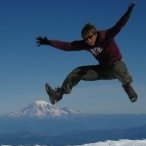
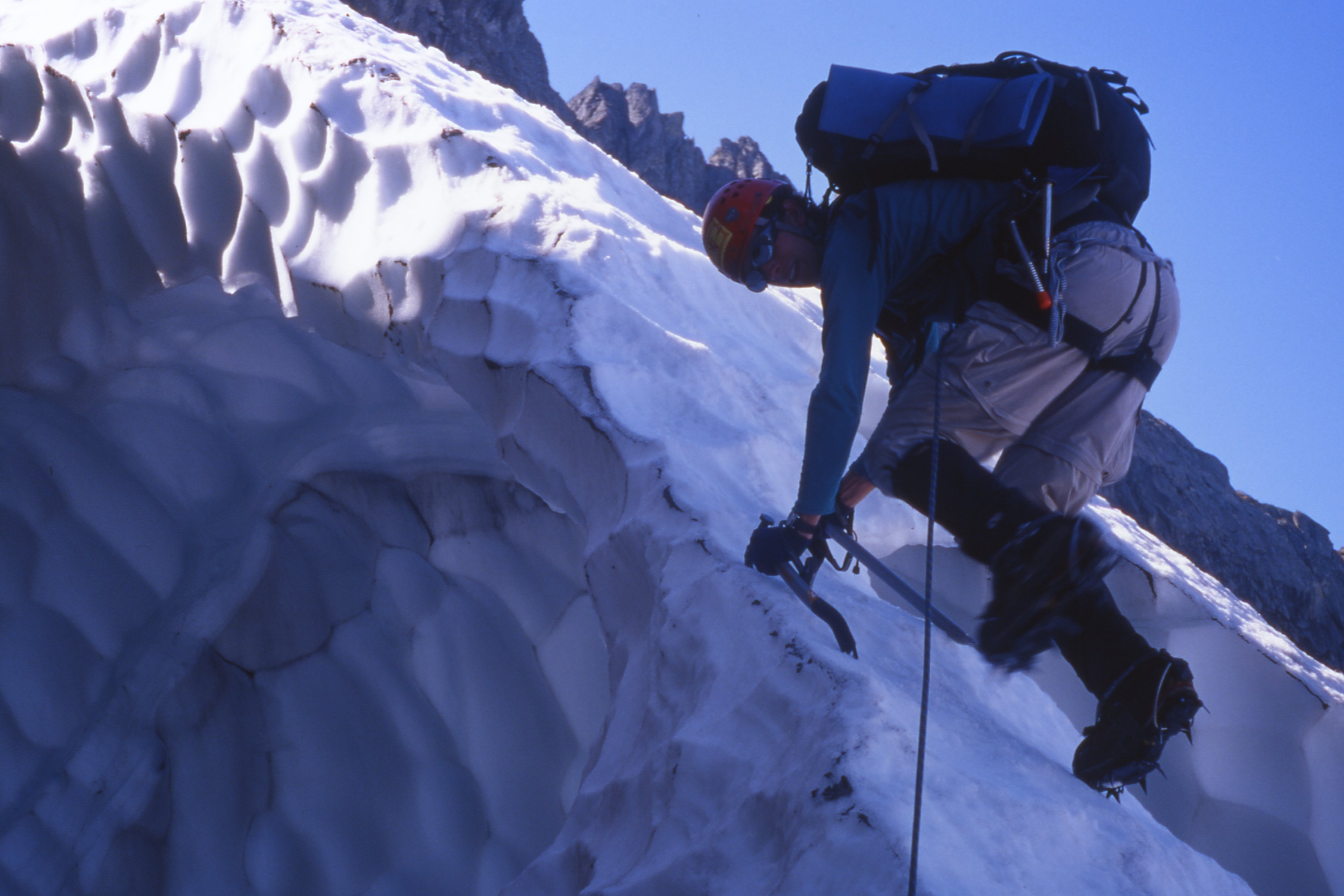
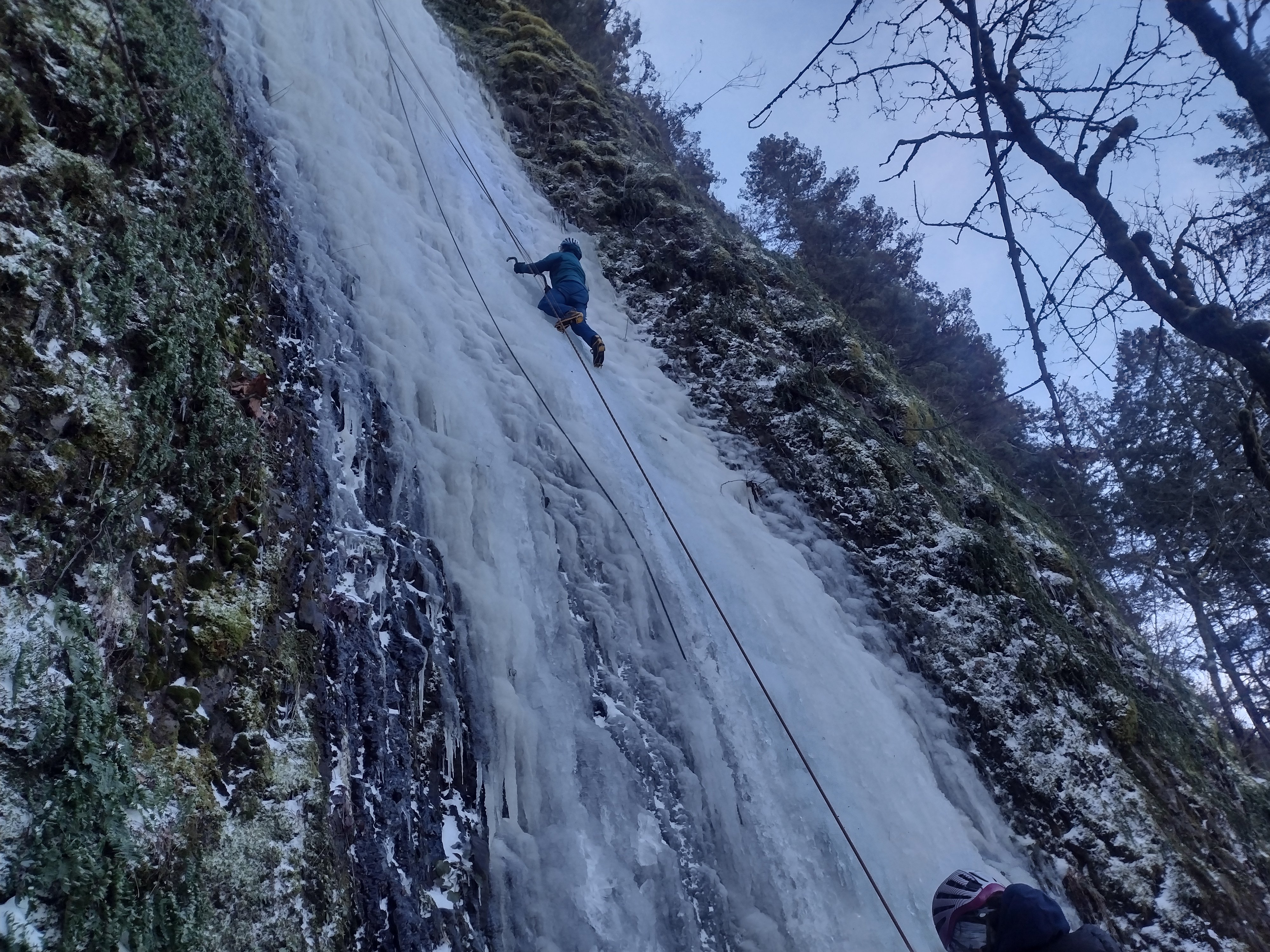
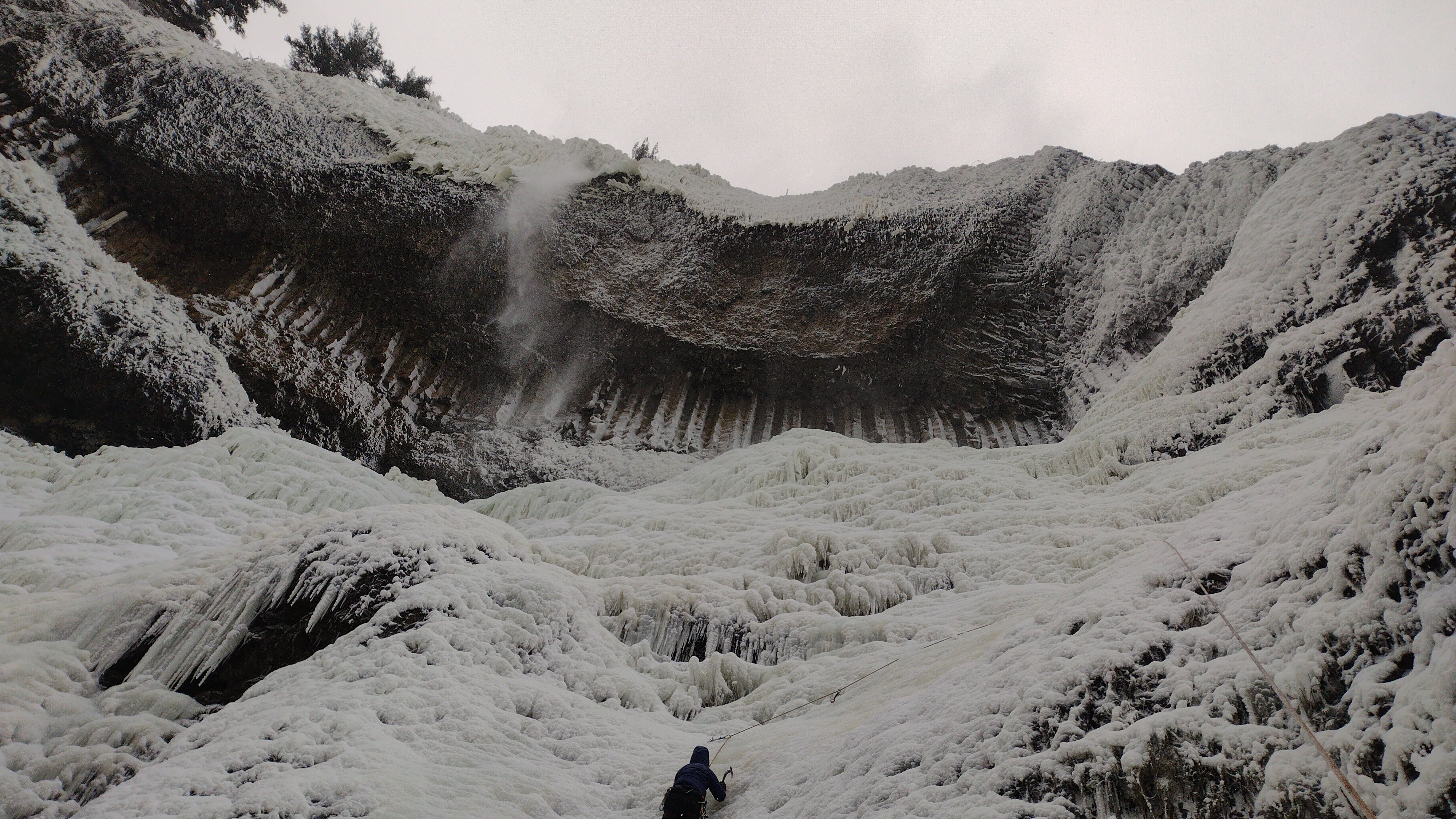
.jpg.1bc59e1ed475e340b96d865a20e3d974.jpg)
